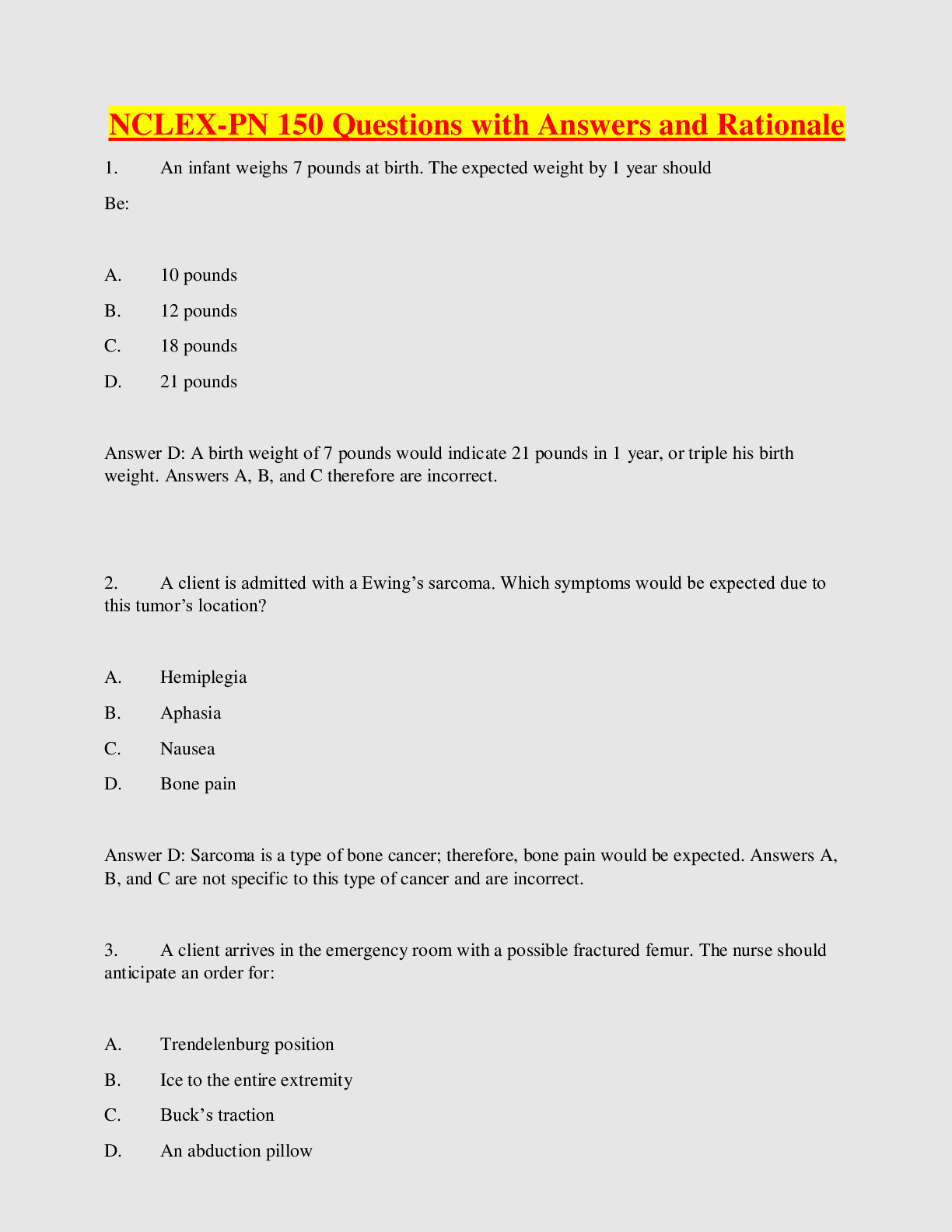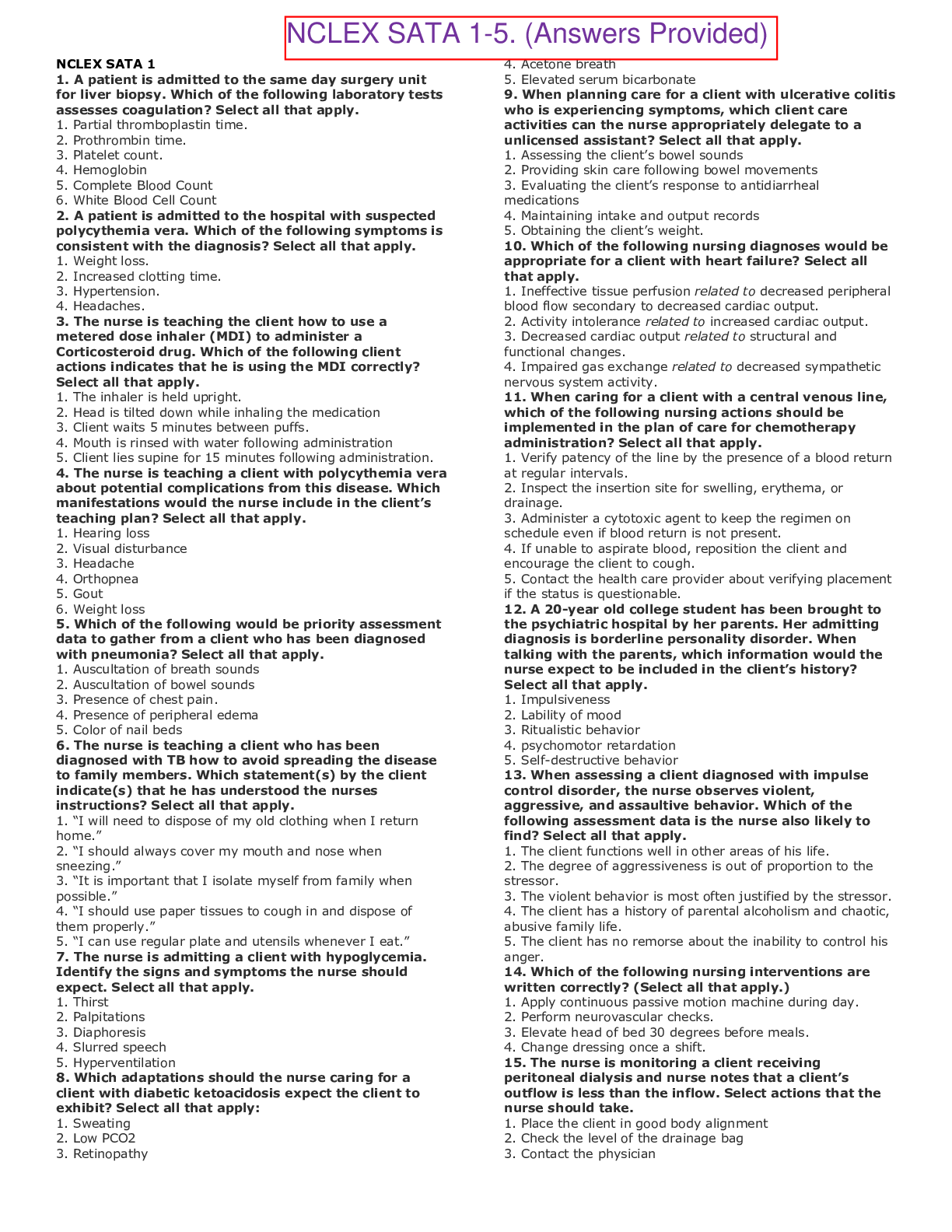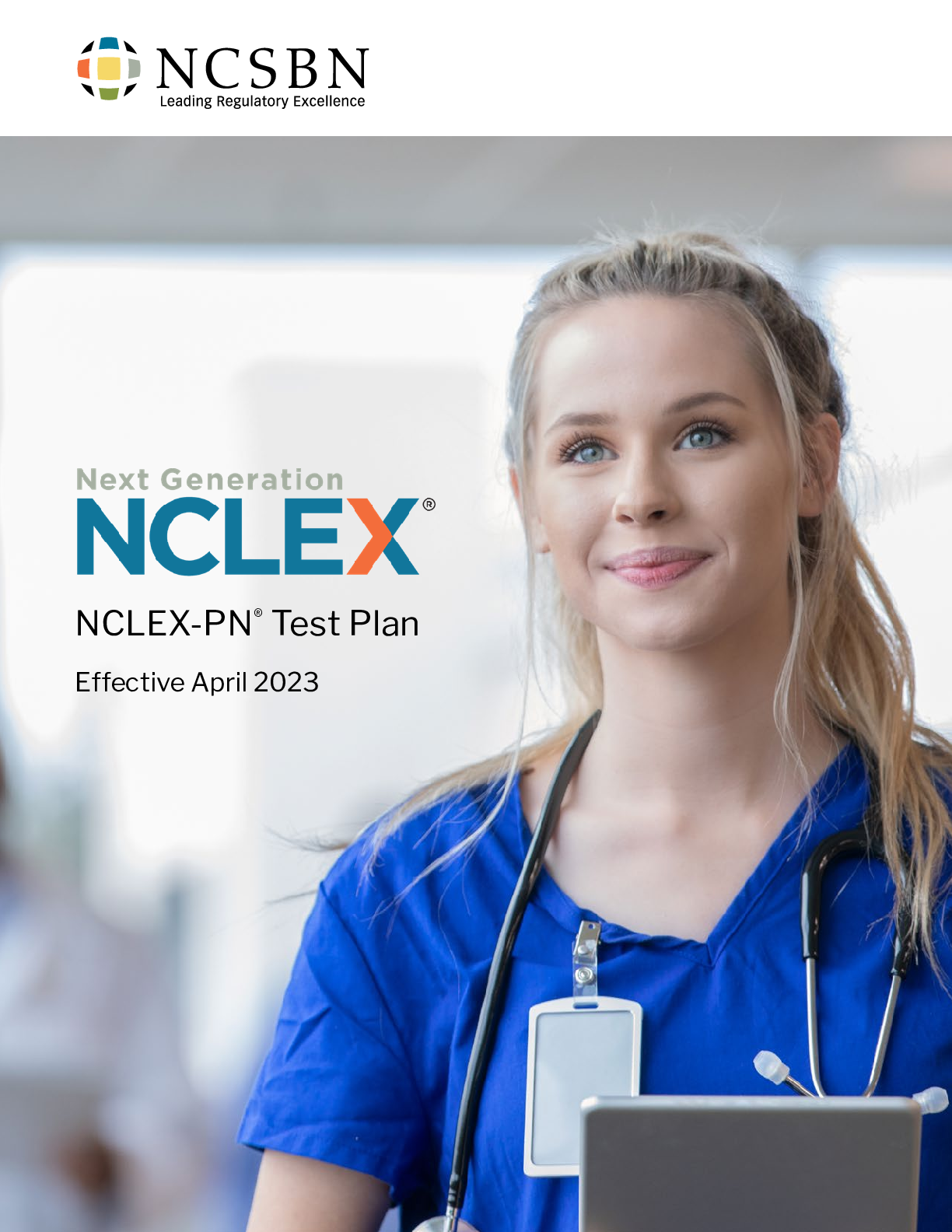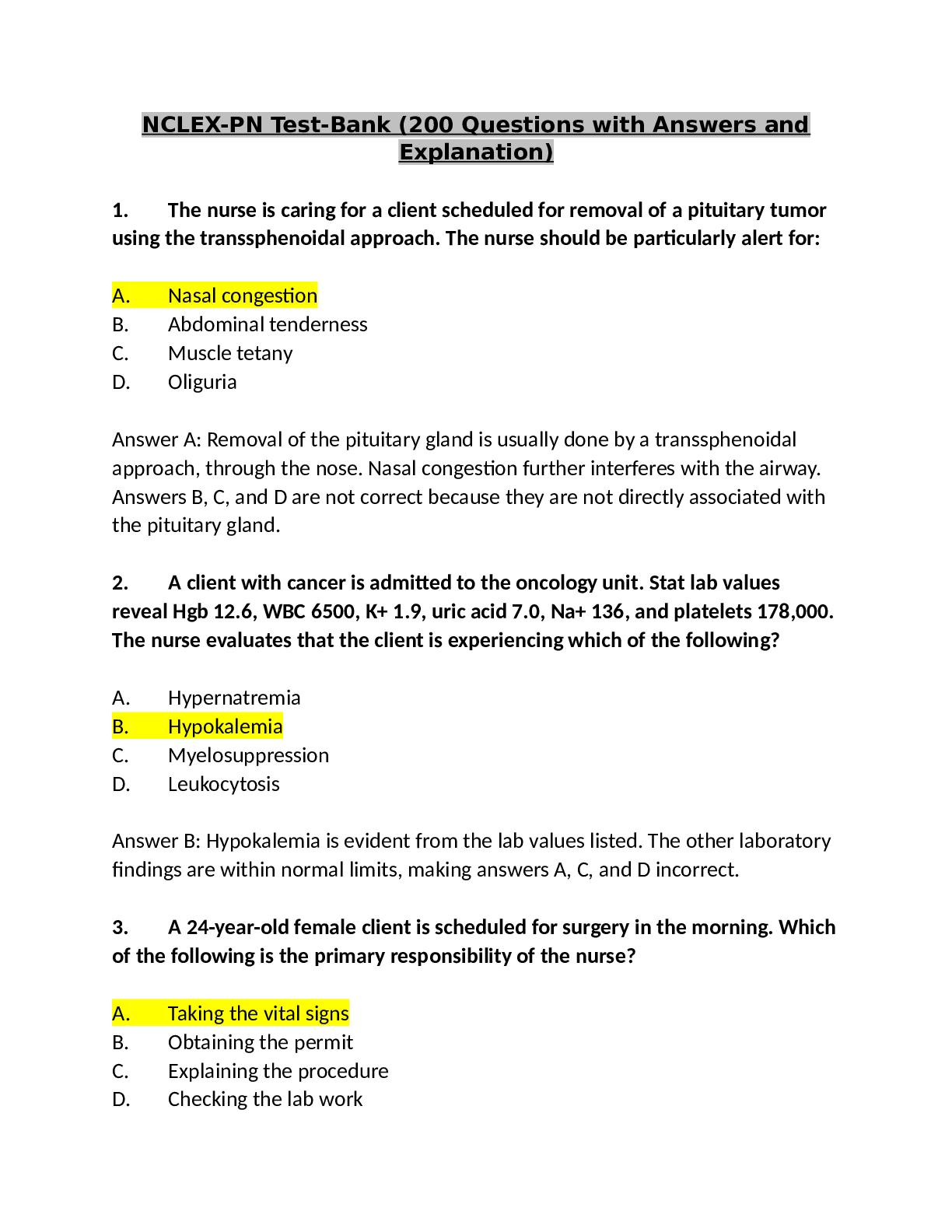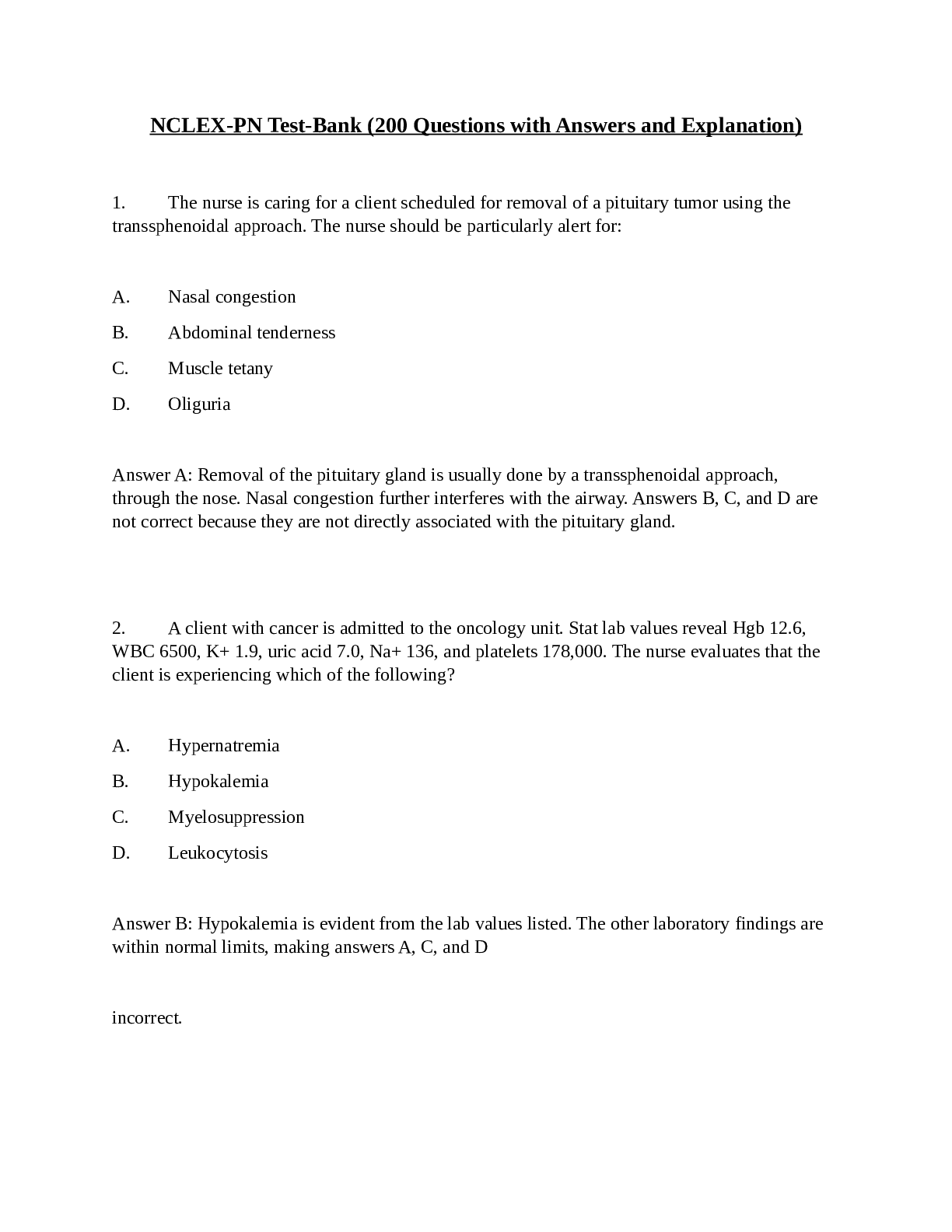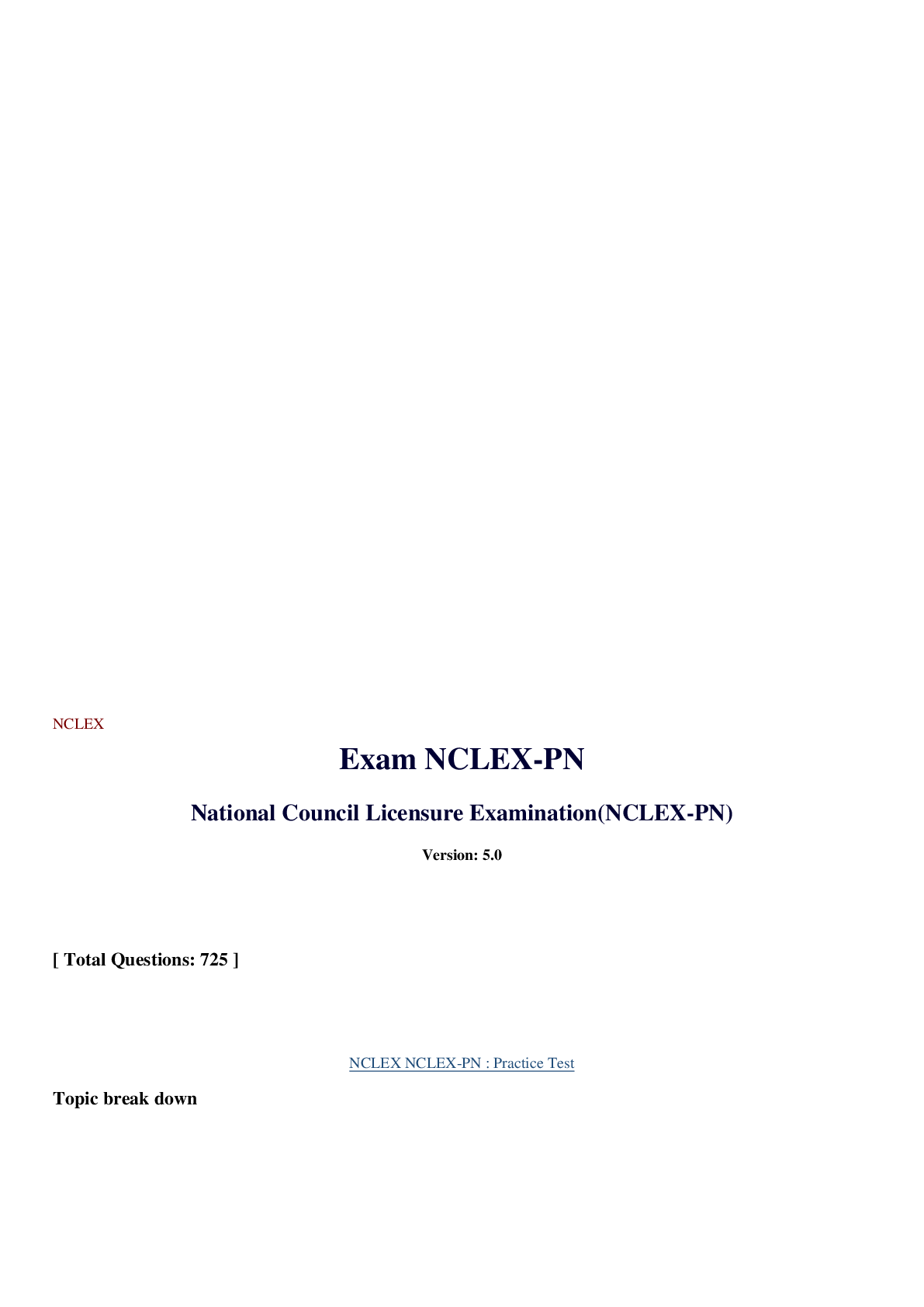*NURSING > NCLEX-PN > NURS 216 Nclex Practice questions (updated) - Washington Adventist College | NURS216 Nclex Practice (All)
NURS 216 Nclex Practice questions (updated) - Washington Adventist College | NURS216 Nclex Practice questions (updated)
Document Content and Description Below
1. The nurse knows that which statement by the mother indicates that the mother understands safety precautions with her four month-old infant and her 4 year-old child? A) "I strap the infant car se... at on the front seat to face backwards." B) "I place my infant in the middle of the living room floor on a blanket to play with my 4 year old while I make supper in the kitchen." C) "My sleeping baby lies so cute in the crib with the little buttocks stuck up in the air while the four year old naps on the sofa." D) "I have the 4 year-old hold and help feed the four month-old a bottle in the kitchen while I make supper." Review Information: The correct answer is D: "I have the four year-old hold and help feed the four month-old a bottle in the kitchen while I make supper." The infant seat is to be placed on the rear seat. Small children and infants are not to be left unsupervised. Infants are to be placed on their "back when they go back" to sleep or are lying in a crib. A 4 year-old could assist with the care of an infant with proper supervision. This enhances bonding with the infant and the developmental needs of the preschooler to "help" and not feel left out. 2. Upon completing the admission documents, the nurse learns that the 87 year-old client does not have an advance directive. What action should the nurse take? A) Record the information on the chart B) Give information about advance directives C) Assume that this client wishes a full code D) Refer this issue to the unit secretary Review Information: The correct answer is B: Give information about advance directives For each admission, nurses should request a copy of the current advance directive. If there is none, the nurse must offer information about what an advance directive implies. It is then the client’s choice to sign it. In option 1 just recording the information is not sufficient. In option 3 the nurse should not assume that the client has been informed of choices for emergency care. In option 4 this represents an inappropriate delegation approach. 3. A nurse administers the influenza vaccine to a client in a clinic. Within 15 minutes after the immunization was given, the client complains of itchy and watery eyes, increased anxiety, and difficulty breathing. The nurse expects that the first action in the sequence of care for this client will be to A) Maintain the airway B) Administer epinephrine 1:1000 as ordered C) Monitor for hypotension with shock D) Administer diphenhydramine as ordered Review Information: The correct answer is B: Administer epinephrine 1:1000 as ordered .All the answers are correct given the circumstances. The correct sequence of care is to administer the epinephrine, then maintain airway. In the early stages of anaphylaxis, when the patient has not lost consciousness and is normatensive, administering the epinephrine and then applying the oxygen, watching for hypotension and shock are later responses. The prevention of a severe crisis is maintained by using diphenhydramine. 4. Which of these children at the site of a disaster at a child day care center would the triage nurse put in the "treat last" category? An infant with intermittent buldging anterior fontonel between crying episodes A toddler with severe deep abrasions over 98% of the body A preschooler with 1 lower leg fracture and the other leg with an upper leg fracture A school-age child with singed eyebrows and hair on the arms Review Information: The correct answer is B: A toddler with severe deep abrasions over 98% of the body .This child has the least chance of survival. Severe deep abrasions are to be thought of as second and third degree burns. The child has great risk of shock and infection combined. 5. When admitting a client to an acute care facility, an identification bracelet is sent up with the admission form. In the event these do not match, the nurse’s best action is to change whichever item is incorrect to the correct information use the bracelet and admission form until a replacement is supplied notify the admissions office and wait to apply the bracelet make a corrected identification bracelet for the client Review Information: The correct answer is C: notify the admissions office and wait to apply the bracelet The Admissions Office has the responsibility to verify the client’s identity and keep all the records in the system consistent. Making the changes puts the client at risk for misidentification. Using an incorrect identification bracelet is unsafe. Making a new bracelet on the unit is not appropriate. 6. The nurse is having difficulty reading the health care provider's written order that was written right before the shift change. What action should be taken? Leave the order for the oncoming staff to follow-up Contact the charge nurse for an interpretation Ask the pharmacy for assistance in the interpretation Call the provider for clarification Review Information: The correct answer is D: Call the provider for clarification Relying on anyone else''s interpretation is very risky. When in doubt, check it out with the person who wrote the illegible order. Order entry systems help to minimize this problem. 7. An adult client is found to be unresponsive on morning rounds. After checking for responsiveness and calling for help, the next action that should be taken by the nurse is to: A) check the cartoid pulse B) deliver 5 abdominal thrusts C) give 2 rescue breaths D) open the client's airway Review Information: The correct answer is D: open the client''s airway According to the ABCs of CPR the first step in rescuing an unresponsive victim after checking responsiveness and calling for help is to open the victims airway. The airway must be opened appropriately before the need for rescue breaths can be determined. The pulse is assessed, after breathing is evaluated. The need for abdominal thrusts is determined by inability to achieve chest rise when ventilation is attempted. 8. A client has an order for 1000 ml of D5W over an 8 hour period. The nurse discovers that 800 ml has been infused after 4 hours. What is the priority nursing action? A) Ask the client if there are any breathing problems B) Have the client void as much as possible C) Check the vital signs D) Ausculate the lungs Review Information: The correct answer is D: Ausculate the lungs All of the options would be part of the evaluation for the effects of the large amount of fluid in a short period of time. However the worst result is heart failure with lung congestion so the auscultation of the lungs is the priority action. The sequence of actions would be 4 1 3 2. 9. Following change-of-shift report on an orthopedic unit, which client should the nurse see first? 16 year-old who had an open reduction of a fractured wrist 10 hours ago 20 year-old in skeletal traction for 2 weeks since a motor cycle accident 72 year-old recovering from surgery after a hip replacement 2 hours ago 75 year-old who is in skin traction prior to planned hip pinning surgery. Review Information: The correct answer is C: 72 year-old recovering from surgery after a hip replacement 2 hours ago Look for the client who is in the least stable condition. The client who returned from surgery 2 hours ago is at risk for hemorrhage and should be seen first. The 16 year-old should be seen next because it is still the first post-op day. The 75 year-old in skin traction should be seen next. The client who can safely be seen last is the 20 year-old who is 2 weeks post-injury. 10. A nurse observes a family member administer a rectal suppository by having the client lie on the left side for the administration. The family member pushed the suppository until the finger went up to the second knuckle. After 10 minutes the client was told by the family member to turn to the right side and the client did this. What is the appropriate comment for the nurse to make? Why don’t we now have the client turn back to the left side. That was done correctly. Did you have any problems with the insertion? Let’s check to see if the suppository is in far enough. Did you feel any stool in the intestinal tract? Review Information: The correct answer is B: That was done correctly. Did you have any problems with the insertion? Left side-lying position is the optimal position for the client receiving rectal medications. Due to the position of the descending colon, left side-lying allows the medication to be inserted and move along the natural curve of the intestine and facilitates retention of the medication. After a short time it will not hurt the client to turn in any manner. The suppository should be somewhat melted after 10 to 15 minutes. The other responses are incorrect since no data is in the stem to support such comments. 11. A client with a diagnosis of Methicillin resistant Staphylococcus aureus (MRSA) has died. Which type of precautions is the appropriate type to use when performing postmortem care? A) airborne precautions B) droplet precautions C) contact precautions D) compromised host precautions Review Information: The correct answer is C: contact precautions The resistant bacteria remain alive for up to 3 days post death. Therefore, contact precautions must still be implemented. Also label the body so that the funeral home staff can protect themselves as well. Gown and gloves are required. 12. The nurse is reviewing with a client how to collect a clean catch urine specimen. Which sequence is appropriate teaching?A) Void a little, clean the meatus, then collect specimen B) clean the meatus, begin voiding, then catch urine stream C) Clean the meatus, then urinate into container D) Void continuously and catch some of the urine Review Information: The correct answer is B: clean the meatus, begin voiding, then catch urine stream A clean catch urine is difficult to obtain and requires clear directions. Instructing the client to carefully clean the meatus, then void naturally with a steady stream prevents surface bacteria from contaminating the urine specimen. As starting and stopping flow can be difficult, once the client begins voiding it''s best to just slip the container into the stream. Other responses are not correct technique. 13. The provider orders Lanoxin (digoxin) 0.125 mg po and furosomide 40 mg every day. Which of these foods would the nurse reinforce for the client to eat at least daily? A) spaghetti B) watermelon C) chicken D) tomatoes Review Information: The correct answer is B: watermelon Watermelon is high in potassium and will replace any potassium lost by the diuretic. The other foods are not high in potassium. 14. A nurse is stuck in the hand by an exposed needle. What immediate action should the nurse take? A) Look up the policy on needle sticks B) Contact employee health services C) Immediately wash the hands with vigor D) Notify the supervisor and risk management Review Information: The correct answer is C: Immediately wash the hands with vigor The immediate action of vigorously washing will help remove possible contamination. Then the sequence would then be options 4, 1, 2. 15. As the nurse observes the student nurse during the administration of a narcotic analgesic IM injection, the nurse notes that the student begins to give the medication without first aspirating. What should the nurse do? A) Ask the student: "What did you forget to do?” B) Stop. Tell me why aspiration is needed. C) Loudly state: “You forgot to aspirate.” D) Walk up and whisper in the student’s ear “Stop. Aspirate. Then inject.” Review Information: The correct answer is D: Walk up and whisper in the student’s ear “Stop. Aspirate. Then inject.” This action is a direct threat to the client if the medication enters into the blood stream instead of the muscle. The purpose of aspiration with IM injections is to prevent the injection of the drug directly into the blood stream. Option 4 protects the client and is the most professional. 16. A client with Guillain Barre is in a nonresponsive state, yet vital signs are stable and breathing is independent. What should the nurse document to most accurately describe the client's condition? A) Comatose, breathing unlabored B) Glascow Coma Scale 8, respirations regular C) Appears to be sleeping, vital signs stable D) Glascow Coma Scale 13, no ventilator required Review Information: The correct answer is B: Glascow Coma Scale 8, respirations regular The Glascow Coma Scale provides a standard reference for assessing or monitoring level of consciousness. Any score less than 13 indicates a neurological impairment. Using the term comatose provides too much room for interpretation and is not very precise. 17. A client enters the emergency department unconscious via ambulance from the client’s work place. What document should be given priority to guide the direction of care for this client? The statement of client rights and the client self determination act Orders written by the health care provider A notarized original of advance directives brought in by the partner The clinical pathway protocol of the agency and the emergency department Review Information: The correct answer is C: A notarized original of advance directives brought in by the partner This document specifies the client''s wishes. 18. The charge nurse has a health care team that consists of 1 PN, 1 unlicensed assistive personnel (UAP) and 1 PN nursing student. Which assignment should be questioned by the nurse manager? An admission at the change of shifts with atrial fibrillation and heart failure - PN Client who had a major stroke 6 days ago - PN nursing student A child with burns who has packed cells and albumin IV running - charge nurse An elderly client who had a myocardial infarction a week ago - UAP Review Information: The correct answer is A: An admission at the change of shifts with atrial fibrillation and heart failure - PN The care for a new admissions should be performed by an RN. Since the client was admitted at the change of shifts, the stability of the client would not have been established. The charge nurse should take this client. The PN could monitor the IV fluids in option C. Tasks that do not require independent judgment should be delegated. The nurse may delegate the care for a stable client to a UAP. 19. A mother brings her 3 month-old into the clinic, complaining that the child seems to be spitting up all the time and has a lot of gas. The nurse expects to find which of the following on the initial history and physical assessment? A) Increased temperature and lethargy B) Restlessness and increased mucus production C) Increased sleeping and listlessness D) Diarrhea and poor skin turgor Review Information: The correct answer is B: Restlessness and increased mucus production This infant could be experiencing gastroesophageal reflux, or could be allergic to the formula. Restlessness, irritability and increased mucus production can develop if an allergy is present. Soy based formula is often recommended. 20. As the nurse takes a history of a 3 year-old with neuroblastoma, what comments by the parents require follow-up and are consistent with the diagnosis? A) "The child has been listless and has lost weight." B) "The urine is dark yellow and small in amounts." C) "Clothes are becoming tighter across her abdomen." D) "We notice muscle weakness and some unsteadiness." Review Information: The correct answer is C: "Clothes are becoming tighter across her abdomen." One of the most common signs of neuroblastoma is increased abdominal girth. The parents'' report that clothing is tight is significant, and should be followed by additional assessments. 21. A 16 year-old enters the emergency department. The triage nurse identifies that this teenager is legally married and signs the consent form for treatment. What would be the appropriate action by the nurse? Ask the teenager to wait until a parent or legal guardian can be contacted Withhold treatment until telephone consent can be obtained from the partner Refer the teenager to a community pediatric hospital emergency department Proceed with the triage process in the same manner as any adult client Review Information: The correct answer is D: Proceed with the triage process in the same manner as any adult client Minors may become known as an "emancipated minor" through marriage, pregnancy, high school graduation, independent living or service in the military. Therefore, this client, who is married, has the legal capacity of an adult. 22. A newly admitted elderly client is severely dehydrated. When planning care for this client, which task is appropriate to assign to an unlicensed assistive personnel (UAP)? Converse with the client to determine if the mucuous membranes are impaired Report hourly outputs of less than 30 ml/hr Monitor client's ability for movement in the bed Check skin turgor every 4 hours Review Information: The correct answer is B: Report output of less than 30 ml/hr When directing a UAP, the nurse must communicate clearly about each delegated task with specific instructions on what must be reported. Because the RN is responsible for all care-related decisions, only implementation tasks should be assigned because they do not require independent judgment. 23. The nurse has admitted a 4 year-old with the diagnosis of possible rheumatic fever. Which statement by the parent would cause the nurse to suspect an association with this disease? Our child had chickenpox 6 months ago. Strep throat went through all the children at the day care last month. Both ears were infected over 3 months age. Last week both feet had a fungal skin infection. Review Information: The correct answer is B: Strep throat went through all the children at the day care last month. Evidence supports a strong relationship between infection with Group A streptococci and subsequent rheumatic fever (usually within 2 to 6 weeks). Therefore, the history of playmates recovering from strep throat would indicate that the child diagnosed with rheumatic fever most likely also had strep throat. Sometimes, such an infection has no clinical symptoms. 24. A nurse assigned to a manipulative client for 5 days becomes aware of feelings for a reluctance to interact with the client. The next action by the nurse should be to Discuss the feeling of reluctance with an objective peer or supervisor Limit contacts with the client to avoid reinforcement of the manipulative behavior - - - - - - - - - - - - - - - - - - - - - - - - - - - - - -31. A client who is 12 hour post-op becomes confused and says: “Giant sharks are swimming across the ceiling.” Which assessment is necessary to adequately identify the source of this client's behavior? A) Cardiac rhythm strip B) Pupillary response * C) Pulse oximetry D) Peripheral glucose stick Review Information: The correct answer is C: Pulse oximetry A sudden change in mental status in any post-op client should trigger a nursing intervention directed toward further respiratory evaluation. Pulse oximetry would be the initial assessment. If available, arterial blood gases would be better. Acute respiratory failure is the sudden inability of the respiratory system to maintain adequate gas exchange which may result in hypercapnia and/or hypoxemia. Clinical findings of hypoxemia include these finding which are listed in order of initial to later findings: restlessness, irritability, agitation, dyspnea, disorientation, confusion, delirium, hallucinations, and loss of consciousness. While there may be other factors influencing the client''s findings, the first nursing action should be directed toward oxygenation issues. Once respiratory or oxygenation issues are ruled out then significant changes in glucose would be next to evaluate. 32. A client returns from surgery after an open reduction of a femur fracture. There is a small bloodstain on the cast. Four hours later, the nurse observes that the stain has doubled in size. What is the best action for the nurse to take? A) Call the health care provider B) Access the site by cutting a window in the cast C) Record the findings in the nurse's notes only * D) Outline the spot with a pencil and note the time and date on the cast Review Information: The correct answer is D: Outline the spot with a pencil and note the time and date on the cast This is a good way to assess the amount of bleeding over a period of time. The bleeding does not appear to be excessive and some bleeding is expected with this type of surgery. The bleeding should also be documented in the nurse’s notes. 33. A nurse assessing the newborn of a mother with diabetes understands that hypoglycemia is related to what pathophysiological process? * A) Disruption of fetal glucose supply B) Pancreatic insufficiency C) Maternal insulin dependency D) Reduced glycogen reserves Review Information: The correct answer is A: Disruption of fetal glucose supply After delivery, the high glucose levels which crossed the placenta to the fetus are suddenly stopped. The newborn continues to secrete insulin in anticipation of glucose. When oral feedings begin, the newborn will adjust insulin production within a day or two. 34. The nurse is teaching a parent about side effects of routine immunizations. Which of the following must be reported immediately? A) Irritability B) Slight edema at site C) Local tenderness * D) Temperature of 102.5 F Review Information: The correct answer is D: Temperature of 102.5 F An adverse reaction of a fever should be reported immediately. Other reactions that should be reported include crying for > 3 hours, seizure activity, and tender, swollen, reddened areas. 35. The parents of a toddler ask the nurse how long their child will have to sit in a car seat while in the automobile. What is the nurse’s best response to the parents? * A) “Your child must use a care seat until he weighs at least 40 pounds." B) The child must be 5 years of age to use a regular seat belt. C) “Your child must reach a height of 50 inches to sit in a seat belt." D) “The child can use a regular seat belt when he can sit still." Review Information: The correct answer is A: “Your child must use a care seat until he weighs at least 40 pounds." A child should use a car seat until they weigh 40 pounds. 36. A 16 year-old boy is admitted for Ewing's sarcoma of the tibia. In discussing his care with the parents, the nurse understands that the initial treatment most often includes A) Amputation just above the tumor B) Surgical excision of the mass C) Bone marrow graft in the affected leg * D) Radiation and chemotherapy Review Information: The correct answer is D: Radiation and chemotherapy The initial treatment of choice for Ewing''s sarcoma is a combination of radiation and chemotherapy. 37. A client complains of some discomfort after a below the knee amputation. Which action by the nurse is appropriate to do initially? A) Conduct guided imagery or distraction * B) Ensure that the stump is elevated for the initial day C) Wrap the stump snugly in an elastic bandage D) Administer opioid narcotics as ordered Review Information: The correct answer is B: Ensure that the stump is elevated for the initial day The priority is to elevate the stump, preventing pressure caused by pooling of blood and thus minimizing the pain. Without this measure, a firm elastic bandage, opioid narcotics, or guided imagery will have little effect. The opioid would be given for severe pain. 38. What is the best way that parents of pre-schoolers can begin teaching their child about injury prevention? * A) Set good examples themselves B) Protect their child from outside influences C) Make sure their child understands all the safety rules D) Discuss the consequences of not wearing protective devices Review Information: The correct answer is A: Set good examples themselves Preschool years is the time for parents to begin emphasizing safety education as well as providing protection. Setting a good example themselves is crucial because of the imitative behaviors of pre-schoolers; they are quick to notice discrepancies between what they see and what they are told. 39. Which oxygen delivery system would the nurse apply that would provide the highest concentrations of oxygen to the client? A) Venturi mask B) Partial rebreather mask * C) Non-rebreather maskD) Simple face mask Review Information: The correct answer is C: Non-rebreather mask The non-rebreather mask has a one-way valve that prevents exhales air from entering the reservoir bag and one or more valves covering the air holes on the face mask itself to prevent inhalation of room air but to allow exhalation of air. When a tight seal is achieved around the mask up to 100% of oxygen is available. 40. The nurse is teaching the mother of a 5 month-old about nutrition for her baby. Which statement by the mother indicates the need for further teaching? A) "I'm going to try feeding my baby some rice cereal." B) "When he wakes at night for a bottle, I feed him." * C) "I dip his pacifier in honey so he'll take it." D) "I keep formula in the refrigerator for 24 hours." Review Information: The correct answer is C: "I dip his pacifier in honey so he''ll take it." Honey has been associated with infant botulism and should be avoided. Older children and adults have digestive enzymes that kill the botulism spores. Results for Q&A-Random #1 1. The nurse is performing an assessment on a client who is cachectic and has developed an enterocutaneous fistula following surgery to relieve a small bowel obstruction. The client's total protein level is reported as 4.5. Which of the following would the nurse anticipate? . A) Additional potassium will be given IV B) Blood for coagulation studies will be drawn * C) Total parenteral nutrition (TPN) will be started D) Serum lipase levels will be evaluated Review Information: The correct answer is C: Total parenteral nutrition (TPN) will be started The client is not absorbing nutrients adequately as evidenced by the cachexia and low protein levels. (A normal total serum protein level is 6.0-8.0.) TPN will maintain a positive nitrogen balance in the client who is unable to digest and absorb nutrients adequately. 2. The nurse is assigned to care for 4 clients. Which of the following should be assessed immediately after hearing the report? A) The client with asthma who is now ready for discharge * B) The client with a peptic ulcer who has been vomiting all night C) The client with chronic renal failure returning from dialysis D) The client with pancreatitis who was admitted yesterday Review Information: The correct answer is B: The client with a peptic ulcer who has been vomiting all night A perforated peptic ulcer could cause nausea, vomiting and abdominal distention, and may be a life threatening situation. The client should be assessed immediately and findings reported to the health care provider. 3. A newborn weighed 7 pounds 2 ounces at birth. The nurse assesses the newborn at home 2 days later and finds the weight to be 6 pounds 7 ounces. What should the nurse tell the parents about this weight loss? A) The newborn needs additional assessments B) The mother should breast feed more often C) A change to formula is indicated * D) The loss is within normal limits Review Information: The correct answer is D: The loss is within normal limits A newborn is expected to lose 5-10% of the birth weight in the first few days because of changes in elimination and feeding. 4. During a situation of pain management, which statement is a priority to consider for the ethical guidelines of the nurse? * A) The client's self-report is the most important consideration B) Cultural sensitivity is fundamental to pain management C) Clients have the right to have their pain relieved D) Nurses should not prejudge a client's pain using their own values Review Information: The correct answer is A: The client''s selfreport is the most important consideration Pain is a complex phenomenon that is perceived differently by each individual. Pain is whatever the client says it is. The other statements are correct but not the priority. 5. A 35-year-old client of Puerto Rican-American descent is diagnosed with ovarian cancer. The client states “I refuse both radiation and chemotherapy because they are 'hot.'” The next action for the nurse to take is to A) Document the situation in the notes B) Report the situation to the health care provider C) Talk with the client's family about the situation * D) Ask the client to talk about the concerns about the "hot" treatments Review Information: The correct answer is D: Ask the client to talk about the concerns about the "hot" treatments The "hot-cold" system is found among Mexican-Americans, Puerto Ricans, and other Hispanic-Latinos. Most foods, beverages, herbs, and medicines are categorized as hot or cold, which are symbolic designations and do not necessarily indicate temperature or spiciness. Care and treatment regimens can be negotiated with clients within this framework. 6. Which of the following drugs should the nurse anticipate administering to a client before they are to receive electroconvulsive therapy? A) Benzodiazephines B) Chlorpromazine (Thorazine) * C) Succinylcholine (Anectine) D) Thiopental sodium (Pentothal Sodium) Review Information: The correct answer is C: Succinylcholine (Anectine) Succinylcholine is given intravenously to promote skeletal relaxation. 7. A client is brought to the emergency room following a motor vehicle accident. When assessing the client one-half hour after admission, the nurse notes several physical changes. Which changes would require the nurse's immediate attention? A) Increased restlessness B) Tachycardia * C) Tracheal deviation D) Tachypnea Review Information: The correct answer is C: Tracheal deviation The deviated trachea is a sign that a mediastinal shift has occurred. This is a medical emergency. 8. Which approach is a priority for the nurse who works with clients from many different cultures? A) Speak at least 2 other languages of clients in the neighborhood B) Learn about the cultures of clients who are most often encountered C) Have a list of persons for referral when interaction with these clients occur * D) Recognize personal attitudes about cultural differences and real or expected biases Review Information: The correct answer is D: Recognize personal attitudes about cultural differences and real or expected biases The nurse must discover personal attitudes, prejudices and biases specific to different cultures. Sensitivity to these will affect interactions with clients and families across cultures. 9. A client with chronic obstructive pulmonary disease (COPD) and a history of coronary artery disease is receiving Aminophylline, 25mg/hour. Which one of the following findings by the nurse would require immediate intervention? A) Decreased blood pressure and respirations. B) Flushing and headache. * C) Restlessness and palpitations. D) Increased heart rate and blood pressure. Review Information: The correct answer is C: Restlessness and palpitations. Side effects of Aminophylline include restlessness and palpitations. 10. The nurse is planning care for an 8 year-old child. Which of the following should be included in the plan of care? * A) Encourage child to engage in activities in the playroom B) Promote independence in activities of daily living C) Talk with the child and allow him to express his opinions D) Provide frequent reassurance and cuddling Review Information: The correct answer is A: Encourage child to engage in activities in the playroom According to Erikson, the school age child is in the stage of industry versus inferiority. To help them achieve industry, the nurse should encourage them to carry out tasks and activities in their room or in the playroom. 11. A pregnant client who is at 34 weeks gestation is diagnosed with a pulmonary embolism (PE). Which of these mediations would the nurse anticipate the health care provider ordering? A) Oral Coumadin therapy B) Heparin 5000 units subcutaneously b.i.d. C) Heparin infusion to maintain the PTT at 1.5-2.5 times the control value * D) Heparin by subcutaneous injection to maintain the PTT at 1.5 times the control value Review Information: The correct answer is D: Heparin by subcutaneous injection to maintain the PTT at 1.5 times the control value Several studies have been conducted in pregnant women where oral anticoagulation agents are contraindicated. Warfarin (Coumadin) is known to cross the placenta and is therefore reported to be teratogenic. 12. The nurse is caring for a client with Hodgkin's disease who will be receiving radiation therapy. The nurse recognizes that, as a result of the radiation therapy, the client is most likely to experience A) High fever * B) NauseaC) Face and neck edema D) Night sweats Review Information: The correct answer is B: Nausea Because the client with Hodgkin''s disease is usually healthy when therapy begins, the nausea is especially troubling. 13. While assessing the vital signs in children, the nurse should know that the apical heart rate is preferred until the radial pulse can be accurately assessed at about what age? A) 1 year of age * B) 2 years of age C) 3 years of age D) 4 years of age Review Information: The correct answer is B: 2 years of age A child should be at least 2 years of age to use the radial pulse to assess heart rate. 14. Which of these clients, who all have the findings of a board-like abdomen, would the nurse suggest that the health care provider examine first? * A) An elderly client who stated that "My awful pain in my right side suddenly stopped about 3 hours ago." B) A pregnant woman of 8 weeks newly diagnosed with an ectopic pregnancy C) A middle-aged client admitted with diverticulitis and has taken only clear liquids for the past week D) A teenager with a history of falling off a bicycle and did not hit the handle bars Review Information: The correct answer is A: An elderly client who stated that "My awful pain in my right side suddenly stopped about 3 hours ago." This client has the highest risk for hypovolemic and septic shock since the appendix has most likely ruptured as based on the history of the pain suddenly stopping over three hours ago. Being elderly there, is less reserve for the body to cope with shock and infection over long periods. The others are at risk for shock also. However, given that they fall in younger age groups, they would more likely be able to tolerate an inbalance in circulation. A common complication of falling off a bicycle is hitting the handle bars in the upper abdomen often on the left, resulting in a ruptured spleen. 15. A client with a panic disorder has a new prescription for Xanax (Alpazolam). In teaching the client about the drug's actions and side effects, which of the following should the nurse emphasize? * A) Short-term relief can be expected B) The medication acts as a stimulant C) Dosage will be increased as tolerated D) Initial side effects often continue Review Information: The correct answer is A: Short-term relief can be expected Xanax is a short-acting benzodiazepine useful in controlling panic symptoms quickly 16. Which of these questions is priority when assessing a client with hypertension? * A) "What over-the-counter medications do you take?" B) "Describe your usual exercise and activity patterns." C) "Tell me about your usual diet." D) "Describe your family's cardiovascular history." Review Information: The correct answer is A: "What over-thecounter medications do you take?" Over-the-counter medications, especially those that contain cold preparations can increase the blood pressure to the point of hypertension. 17. During a routine check-up, an insulin-dependent diabetic has his glycosylated hemoglobin checked. The results indicate a level of 11%. Based on this result, what teaching should the nurse emphasize? A) Rotation of injection sites B) Insulin mixing and preparation * C) Daily blood sugar monitoring D) Regular high protein diet Review Information: The correct answer is C: Daily blood sugar monitoring Normal hemoglobin A1C (glycosylated hemoglobin) level is 7 to 9%. Elevation indicates elevated glucose levels over time. 18. Which of these clients would the nurse monitor for the complication of C. difficile diarrhea? A) An adolescent taking medications for acne B) An elderly client living in a retirement center taking prednisone C) A young adult at home taking a prescribed aminoglycoside * D) A hospitalized middle aged client receiving clindamycin Review Information: The correct answer is D: A hospitalized middle aged client receiving clindamycin Hospitalized patients, especially those receiving antibiotic therapy, are primary targets for C. difficile. Of patients receiving antibiotics, 5-38% experience antibiotic-associated diarrhea; C. difficile causes 15 to 20% of the cases. Several antibiotic agents have been associated with C. difficile. Broad-spectrum agents, such as clindamycin, ampicillin, amoxicillin, and cephalosporins, are the most frequent sources of C. difficile. Also, C. difficile infection has been caused by the administration of agents containing beta-lactamase inhibitors (ie, clavulanic acid, sulbactam, tazobactam) and intravenous agents that achieve substantial colonic intraluminal concentrations (ie, ceftriaxone, nafcillin, oxacillin). Fluoroquinolones, aminoglycosides, vancomycin, and trimethoprim are seldom associated with C. difficile infection or pseudomembranous colitis. 19. The nurse is assessing a comatose client receiving gastric tube feedings. Which of the following assessments requires an immediate response from the nurse? * A) Decreased breath sounds in right lower lobe B) Aspiration of a residual of 100cc of formula C) Decrease in bowel sounds D) Urine output of 250 cc in past 8 hours Review Information: The correct answer is A: Decreased breath sounds in right lower lobe The most common problem associated with enteral feedings is atelectasis. Maintain client at 30 degrees during feedings and monitor for signs of aspiration. Check for tube placement prior to each feeding or every 4 to 8 hours if continuous feeding. 20. The nurse is preparing to take a toddler's blood pressure for the first time. Which of the following actions should the nurse do first? A) Explain that the procedure will help him to get well B) Show a cartoon character with a blood pressure cuff C) Explain that the blood pressure checks the heart pump * D) Permit handling the equipment before putting the cuff in place Review Information: The correct answer is D: Permit handling the equipment before putting the cuff in place The best way to gain the toddler''s cooperation is to encourage handling the equipment. Detailed explanations are not helpful. 21. A 72 year-old client is scheduled to have a cardioversion. A nurse reviews the client’s medication administration record. The nurse should notify the health care provider if the client received which medication during the preceding 24 hours? * A) digoxin (Lanoxin) B) diltiazam (Cardizem) C) nitroglycerine ointment D) metoprolol (Toprol XL) Review Information: The correct answer is A: digoxin (Lanoxin) Digoxin increases ventricular irritability and increases the risk of ventricular fibrillation following cardioversion. The other medications do not increase ventricular irritability. 22. To prevent drug resistance common to tubercle bacilli, the nurse is aware that which of the following agents are usually added to drug therapy? A) Anti-inflammatory agent B) High doses of B complex vitamins C) Aminoglycoside antibiotic * D) Two anti-tuberculosis drugs Review Information: The correct answer is D: Two anti-tuberculosis drugs Resistance of the tubercle bacilli often occurs to a single antimicrobial agent. Therefore, therapy with multiple drugs over a long period of time helps to ensure eradication of the organism. 23. Which statement made by a nurse about the goal of total quality management or continuous quality improvement in a health care setting is correct? A) “It is to observe reactive service and product problem solving." * B) Improvement of the processes in a proactive, preventive mode is paramount. C) A chart audits to finds common errors in practice and outcomes associated with goals. D) A flow chart to organize daily tasks is critical to the initial stages. Review Information: The correct answer is B: Improvement of the processes in a proactive, preventive mode is paramount. Total quality management and continuous quality improvement have a major goal of identifying ways to do the right thing at the right time in the right way by proactive problem-solving. 24. The nurse manager informs the nursing staff at morning report that the clinical nurse specialist will be conducting a research study on staff attitudes toward client care. All staff are invited to participate in the study if they wish. This affirms the ethical principle of A) Anonymity B) Beneficence C) Justice * D) Autonomy Review Information: The correct answer is D: Autonomy Individuals must be free to make independent decisions about participation in research without coercion from others.25. When teaching a client about the side effects of fluoxetine (Prozac), which of the following will be included? A) Tachycardia blurred vision, hypotension, anorexia B) Orthostatic hypotension, vertigo, reactions to tyramine rich foods * C) Diarrhea, dry mouth, weight loss, reduced libido D) Photosensitivity, seizures, edema, hyperglycemia Review Information: The correct answer is C: Diarrhea, dry mouth, weight loss, reduced libido Commonly reported side effects for fluoxetine (Prozac) are diarrhea, dry mouth, weight loss and reduced libido. 26. The nurse is performing an assessment of the motor function in a client with a head injury. The best technique is A) A firm touch to the trapezius muscle or arm B) Pinching any body part C) Sternal rub * D) Gentle pressure on eye orbit Review Information: The correct answer is D: Gentle pressure on eye orbit This is an acceptable stimuli only after progressing from lighter to stimuli to more obnoxious. 27. The nurse is teaching about nonsteroidal anti-inflammatory drugs to a group of arthritic clients. To minimize the side effects, the nurse should emphasize which of the following actions? A) Reporting joint stiffness in the morning * B) Taking the medication 1 hour before or 2 hours after meals C) Using alcohol in moderation unless driving D) Continuing to take aspirin for short term relief Review Information: The correct answer is B: Taking the medication 1 hour before or 2 hours after meals Taking the medication 1 hour before or 2 hours after meals will result in a more rapid effect. 28. A client taking isoniazide (INH) for tuberculosis asks the nurse about side effects of the medication. The client should be instructed to immediatley report which of these? A) Double vision and visual halos * B) Extremity tingling and numbness C) Confusion and lightheadedness D) Sensitivity of sunlight Review Information: The correct answer is B: Extremity tingling and numbness Peripheral neuropathy is the most common side effect of INH and should be reported to the health care provider; it can be reversed. 29. The nurse admits a 2 year-old child who has had a seizure. Which of the following statement by the child's parent would be important in determining the etiology of the seizure? A) "He has been taking long naps for a week." * B) "He has had an ear infection for the past 2 days." C) "He has been eating more red meat lately." D) "He seems to be going to the bathroom more frequently." Review Information: The correct answer is B: "He has had an ear infection for the past 2 days." Contributing factors to seizures in children include those such as age (more common in first 2 years), infections (late infancy and early childhood), fatigue, not eating properly and excessive fluid intake or fluid retention. 30. A client is receiving Total Parenteral Nutrition (TPN) via Hickman catheter. The catheter accidentally becomes dislodged from the site. Which action by the nurse should take priority? A) Check that the catheter tip is intact * B) Apply a pressure dressing to the site C) Monitor respiratory status D) Assess for mental status changes Review Information: The correct answer is B: Apply a pressure dressing to the site The client is at risk of bleeding or the development of an air embolus if the catheter exit site is not covered immediately. 31. An 18 month-old child is on peritoneal dialysis in preparation for a renal transplant in the near future. When the nurse obtains the child's health history, the mother indicates that the child has not had the first measles, mumps, rubella (MMR) immunization. The nurse understands that which of the following is true in regards to giving immunizations to this child? A) Live vaccines are withheld in children with renal chronic illness * B) The MMR vaccine should be given now, prior to the transplant C) An inactivated form of the vaccine can be given at any time D) The risk of vaccine side effects precludes giving the vaccine Review Information: The correct answer is B: The MMR vaccine should be given now, prior to the transplant MMR is a live virus vaccine, and should be given at this time. Posttransplant, immunosuppressive drugs will be given and the administration of the live vaccine at that time would be contraindicated because of the compromised immune system. 32. The nurse is preparing to administer a tube feeding to a post-operative client. To accurately assess for a gastostomy tube placement, the priority is to * A) Auscultate the abdomen while instilling 10 cc of air into the tube B) Place the end of the tube in water to check for air bubbles C) Retract the tube several inches to check for resistance D) Measure the length of tubing from nose to epigastrium Review Information: The correct answer is A: Auscultate the abdomen while instilling 10 cc of air into the tube If a swoosh of air is heard over the abdominal cavity while instilling air into the gastric tube, this indicates that it is accurately placed in the stomach. The feeding can begin after assessing the client for bowel sounds. 33. The nurse is teaching parents of a 7 month-old about adding table foods. Which of the following is an appropriate finger food? A) Hot dog pieces * B) Sliced bananas C) Whole grapes D) Popcorn Review Information: The correct answer is B: Sliced bananas Finger foods should be bite-size pieces of soft food such as bananas. Hot dogs and grapes can accidentally be swallowed whole and can occlude the airway. Popcorn is too difficult to chew at this age and can irritate the airway if swallowed. 34. The clinic nurse is counseling a substance-abusing post partum client on the risks of continued cocaine use. In order to provide continuity of care, which nursing diagnosis is a priority ? A) Social isolation B) Ineffective coping * C) Altered parenting D) Sexual dysfunction Review Information: The correct answer is C: Altered parenting The cocaine abusing mother puts her newborn and other children at risk for neglect and abuse. Continuing to use drugs has the potential to impact parenting behaviors. Social service referrals are indicated. 35. A client has gastroesophageal reflux. Which recommendation made by the nurse would be most helpful to the client? A) Avoid liquids unless a thickening agent is used B) Sit upright for at least 1 hour after eating C) Maintain a diet of soft foods and cooked vegetables * D) Avoid eating 2 hours before going to sleep Review Information: The correct answer is D: Avoid eating2 hours before going to sleep Eating before sleeping enhances the regurgitation of stomach contents which have increased acidity into the esophagus. Maintaining an upright posture should be for about 2 hours after eating to allow for the stomach emptying. The options A and C are interventions for clients with swallowing difficulties. 36. A nurse admits a client transferred from the emergency room. The client, diagnosed with a myocardial infarction, is complaining of substernal chest pain, diaphoresis and nausea. The first action by the nurse should be A) Order an EKG * B) Administer morphine sulphate C) Start an IV D) Measure vital signs Review Information: The correct answer is B: Administer pain medication as ordered Decreasing the clients pain is the most important priority at this time. As long as pain is present there is danger in extending the infarcted area. Morphine will decrease the oxygen demands of the heart and act as a mild diuretic as well. 37. The nurse is talking with the family of an 18 months-old newly diagnosed with retinoblastoma. A priority in communicating with the parents is * A) Discuss the need for genetic counseling B) Inform them that combined therapy is seldom effective C) Prepare for the child's permanent disfigurement D) Suggest that total blindness may follow surgery Review Information: The correct answer is A: Discussing the need for genetic counseling The hereditary aspects of this disease are well documented. While the parents focus on the needs of this child, they should be aware that the risk is high for future offspring. 38. A client is ordered warfarin sodium (Coumadin) to be continued at home. Which focus is critical to be included in the nurse’s discharge instruction? A) Maintain a consistent intake of green leafy foods * B) Report any nose or gum bleeds C) Take Tylenol for minor pains D) Use a soft toothbrush Review Information: The correct answer is B: Report any nose or gum bleeds The client should notify the health care provider if blood is noted in their stools or urine, or any other signs of bleeding occur.39. A client being discharged from the cardiac step-down unit following a myocardial infarction ( MI), is given a prescription for a beta-blocking drug. A nursing student asks the charge nurse why this drug would be used by a client who is not hypertensive. What is the appropriate response by the charge nurse? A) "Most people develop hypertension following an MI." B) "A beta-Blocker will prevent orthostatic hypotension." * C) "This drug will decrease the workload on his heart." D) "Beta-blockers increase the strength of heart contractions." Review Information: The correct answer is C: "This drug will decrease the workload on his heart." One action of beta-blockers is to decrease systemic vascular resistance by dilating arterioles. This is useful for the client with coronary artery disease, and will reduce the risk of another MI or sudden death. 40. As a part of a 9 pound full-term newborn's assessment, the nurse performs a dextro-stick at 1 hour post birth. The serum glucose reading is 45 mg/dl. What action by the nurse is appropriate at this time? A) Give oral glucose water B) Notify the pediatrician * C) Repeat the test in 2 hours D) Check the pulse oximetry reading Review Information: The correct answer is C: Repeat the test in two hours This blood sugar is within the normal range for a full-term newborn. Normal values are: Premature infant: 20-60 mg/dl or 1.1-3.3 mmol/L, Neonate: 30-60 mg/dl or 1.7-3.3 mmol/L, Infant: 40-90 mg/dl or 2.2- 5.0 mmol/L. Critical values are: Infant: <40 mg/dl and in a Newborn: <30 and >300 mg/dl. Because of the increased birth weight which can be associated with diabetes mellitus, repeated blood sugars will be drawn. [Show More]
Last updated: 1 year ago
Preview 1 out of 76 pages
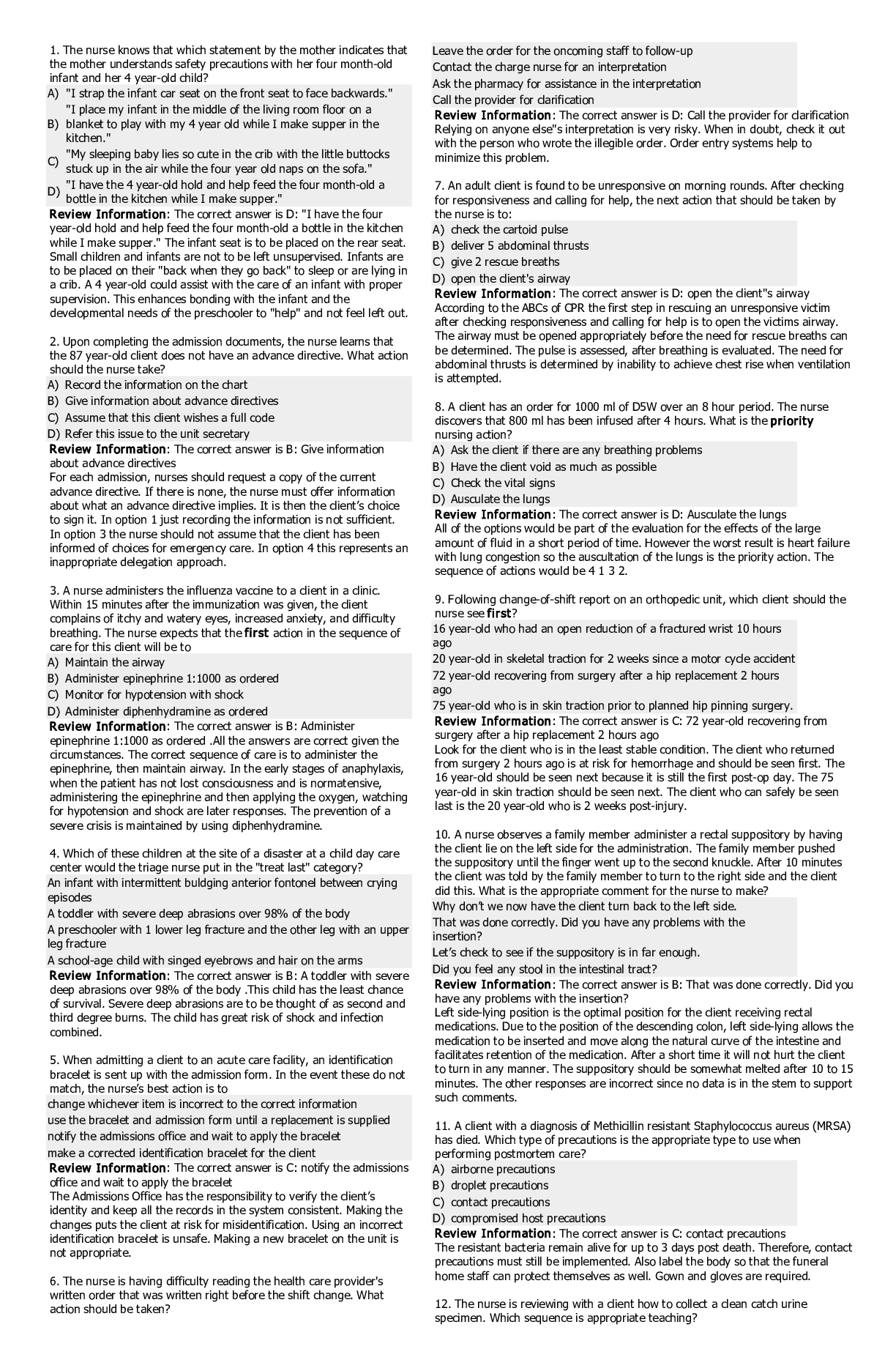
Reviews( 0 )
Document information
Connected school, study & course
About the document
Uploaded On
Aug 04, 2020
Number of pages
76
Written in
Additional information
This document has been written for:
Uploaded
Aug 04, 2020
Downloads
0
Views
98

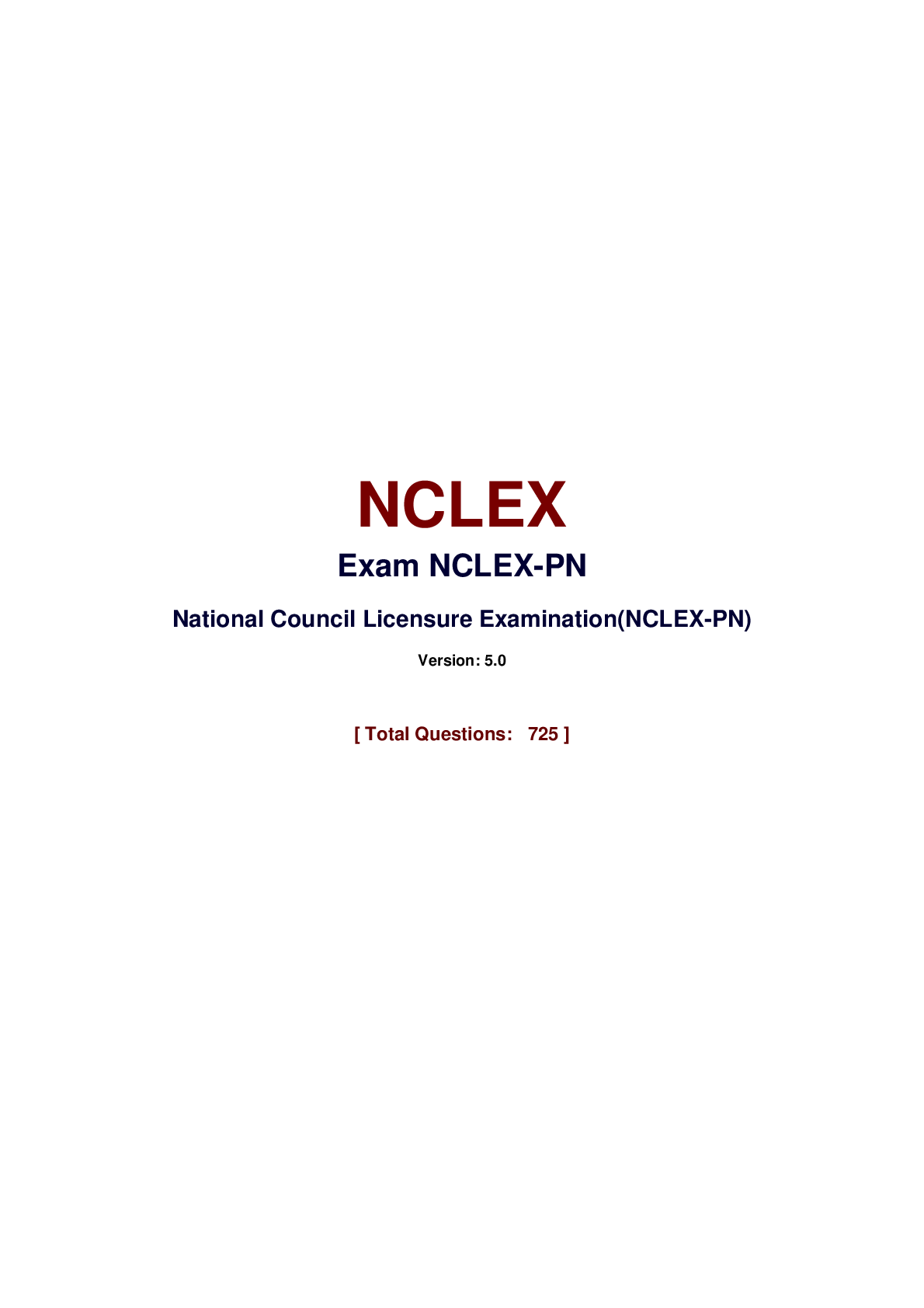

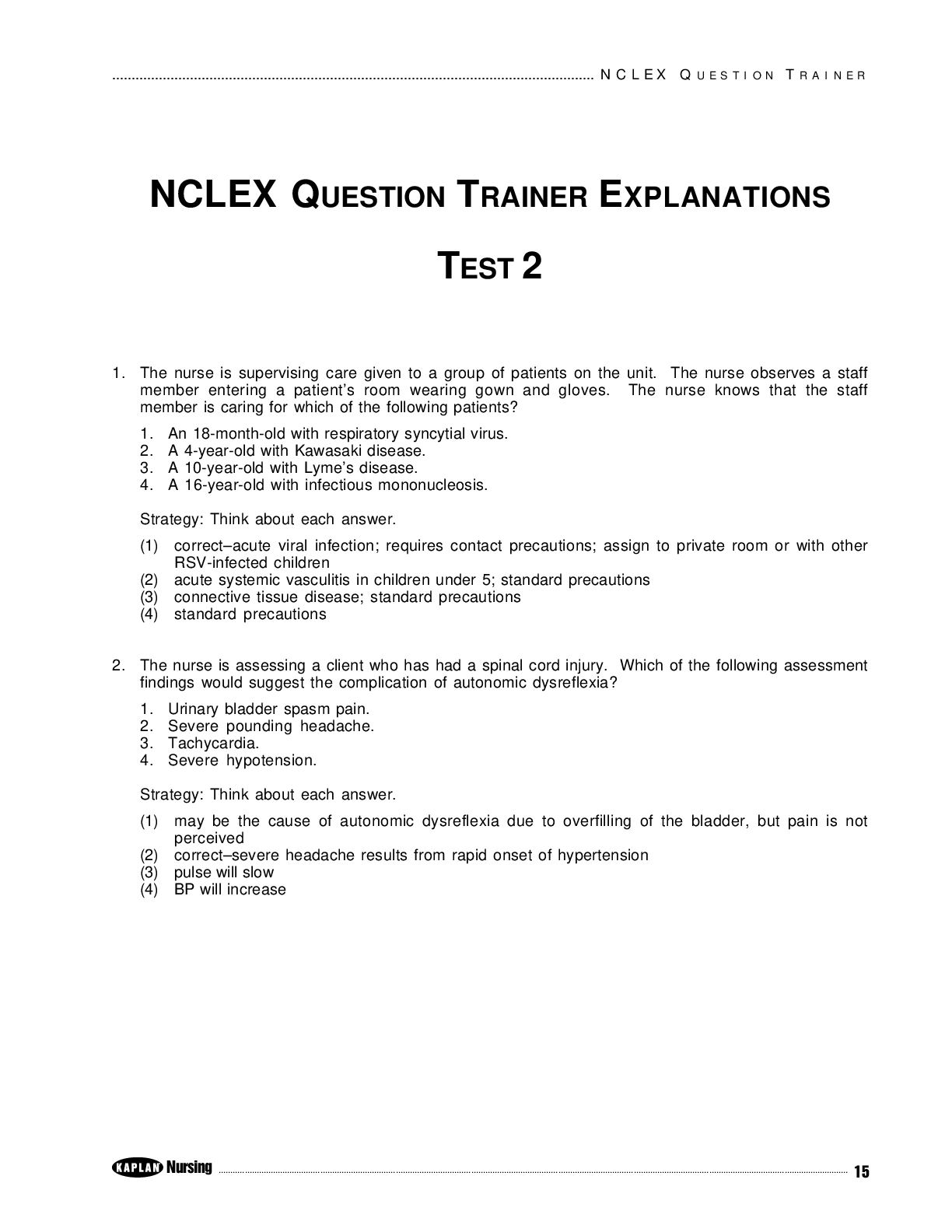
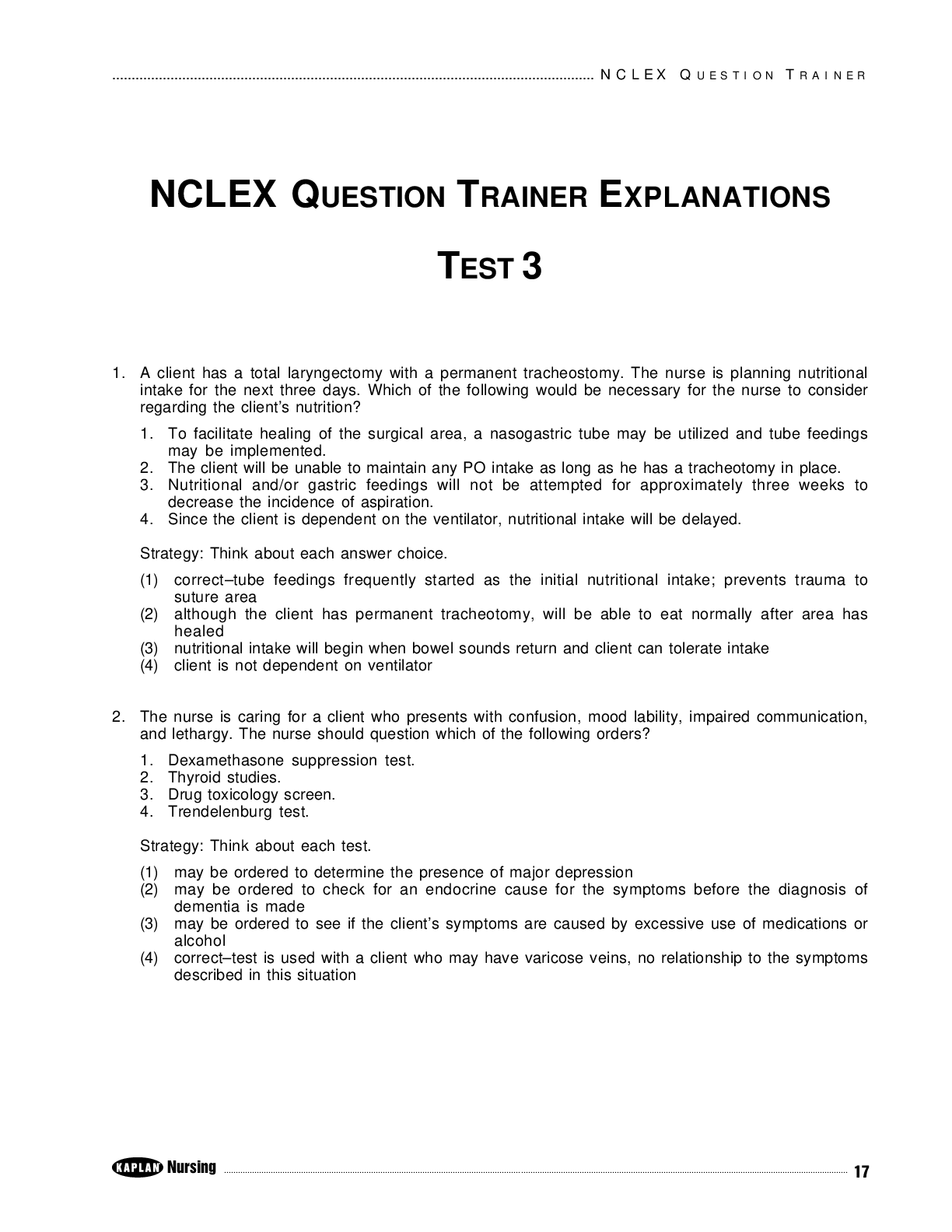
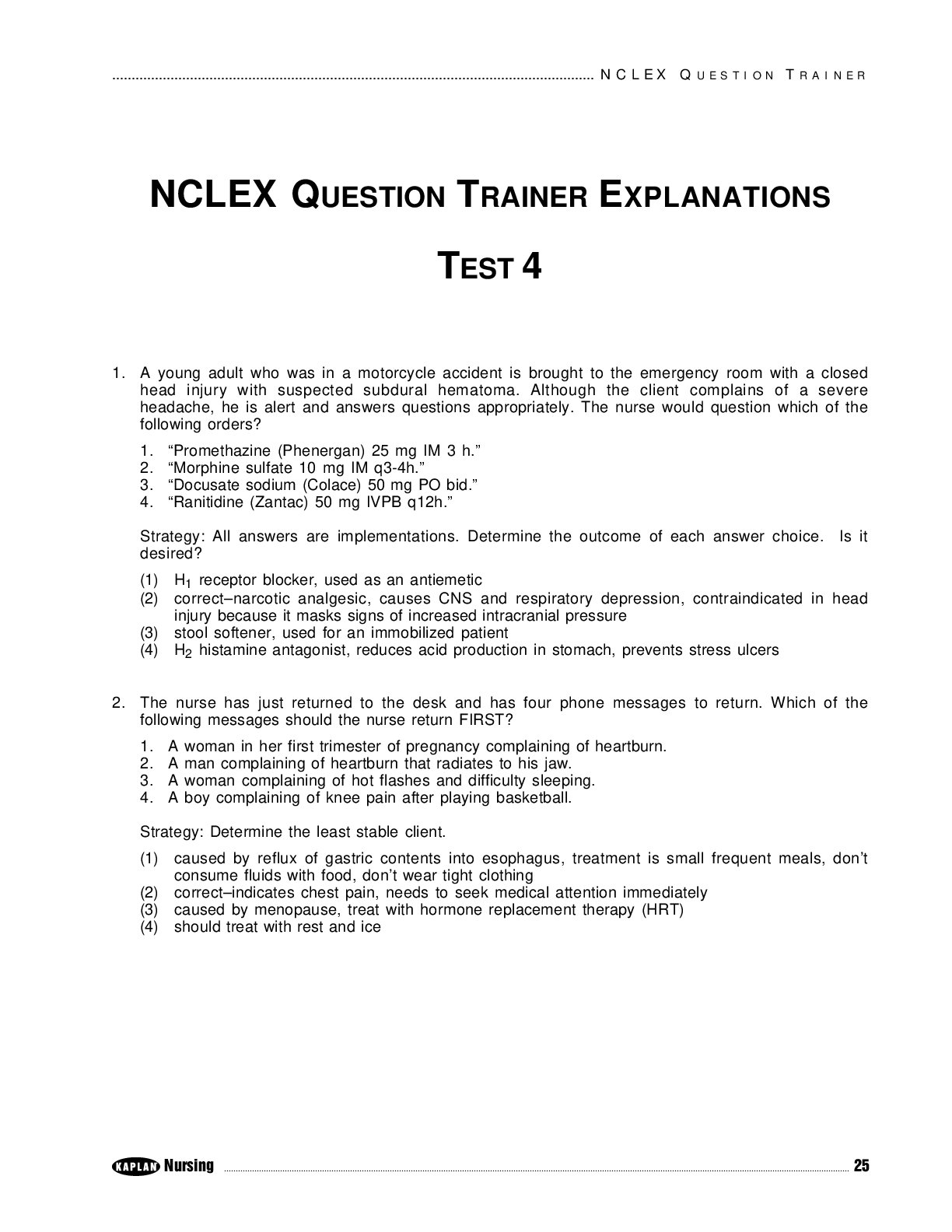
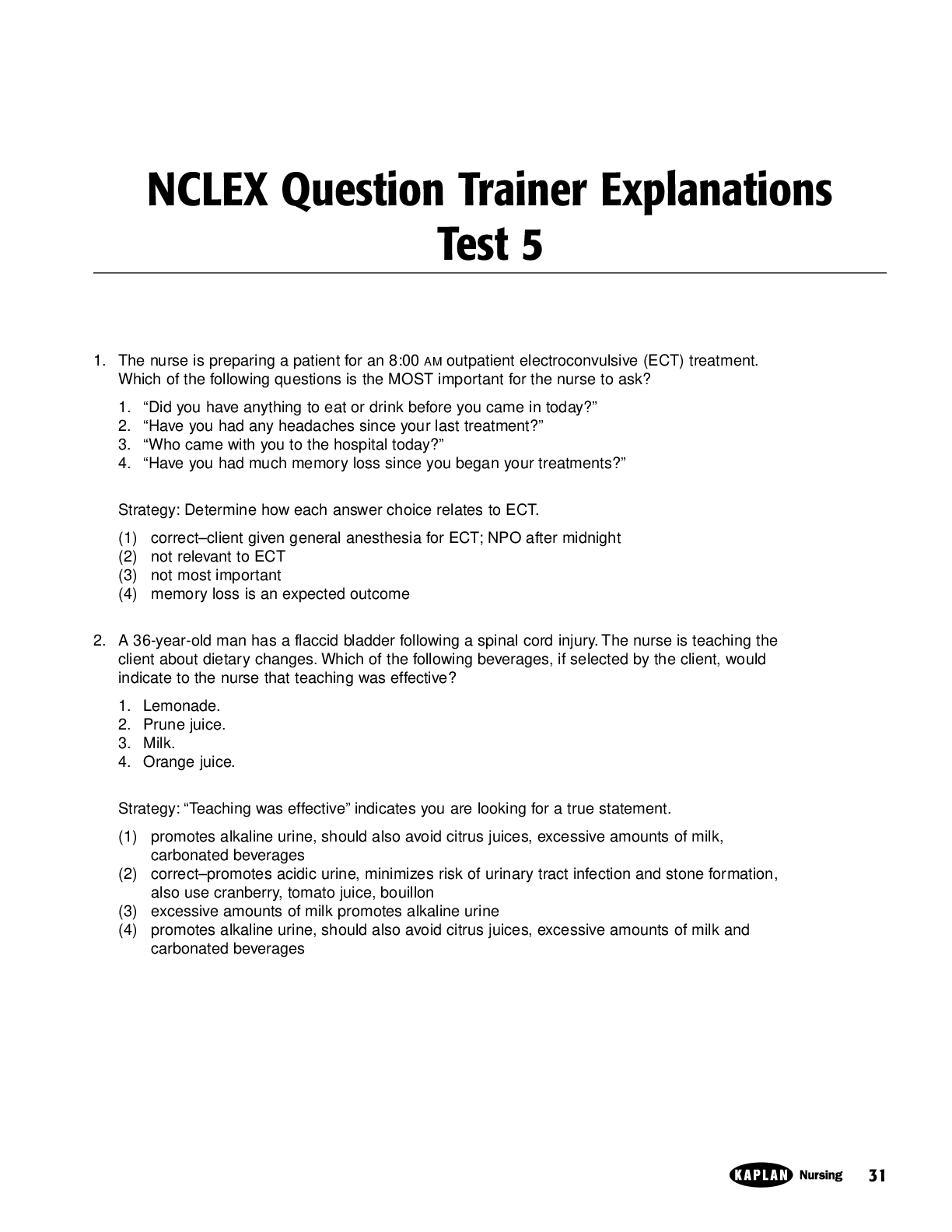
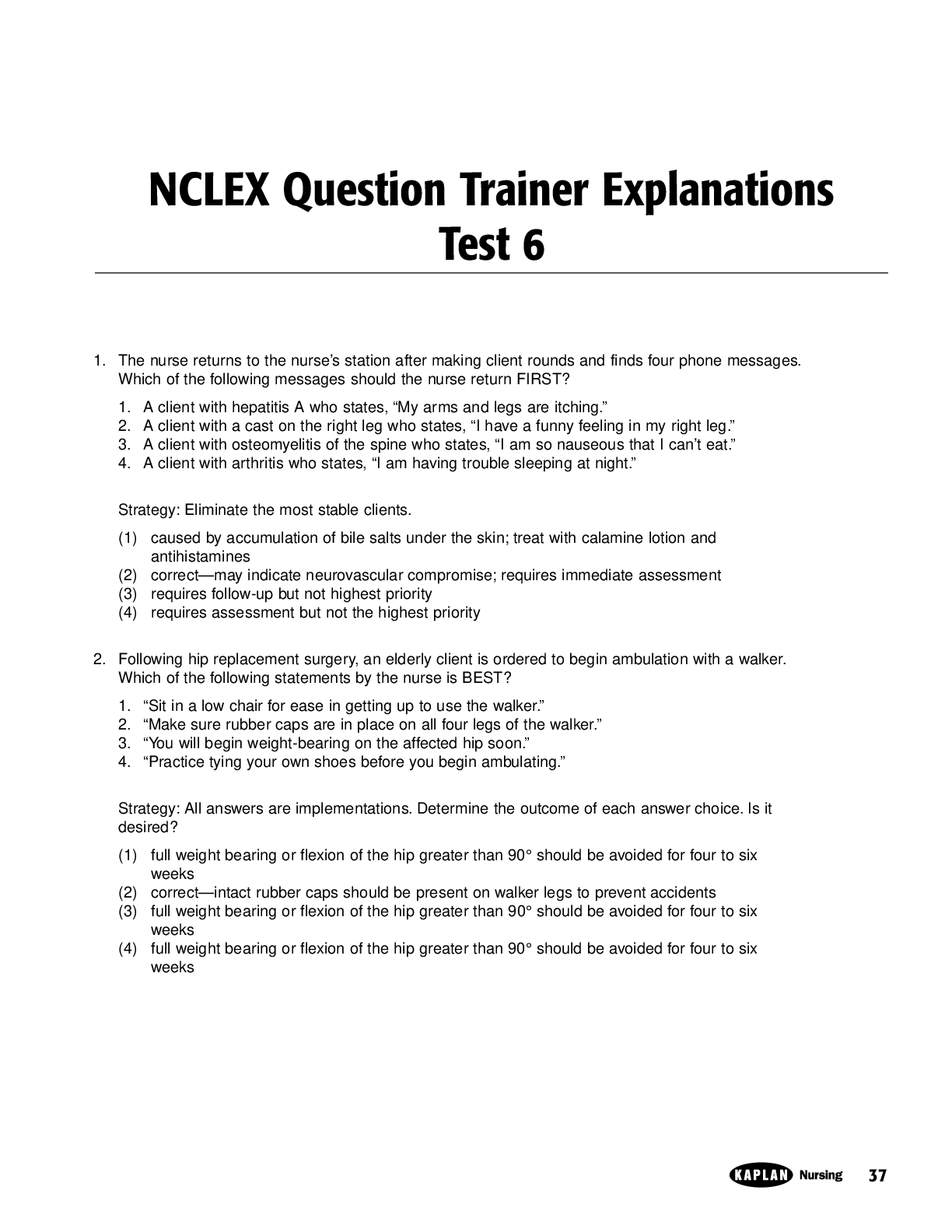
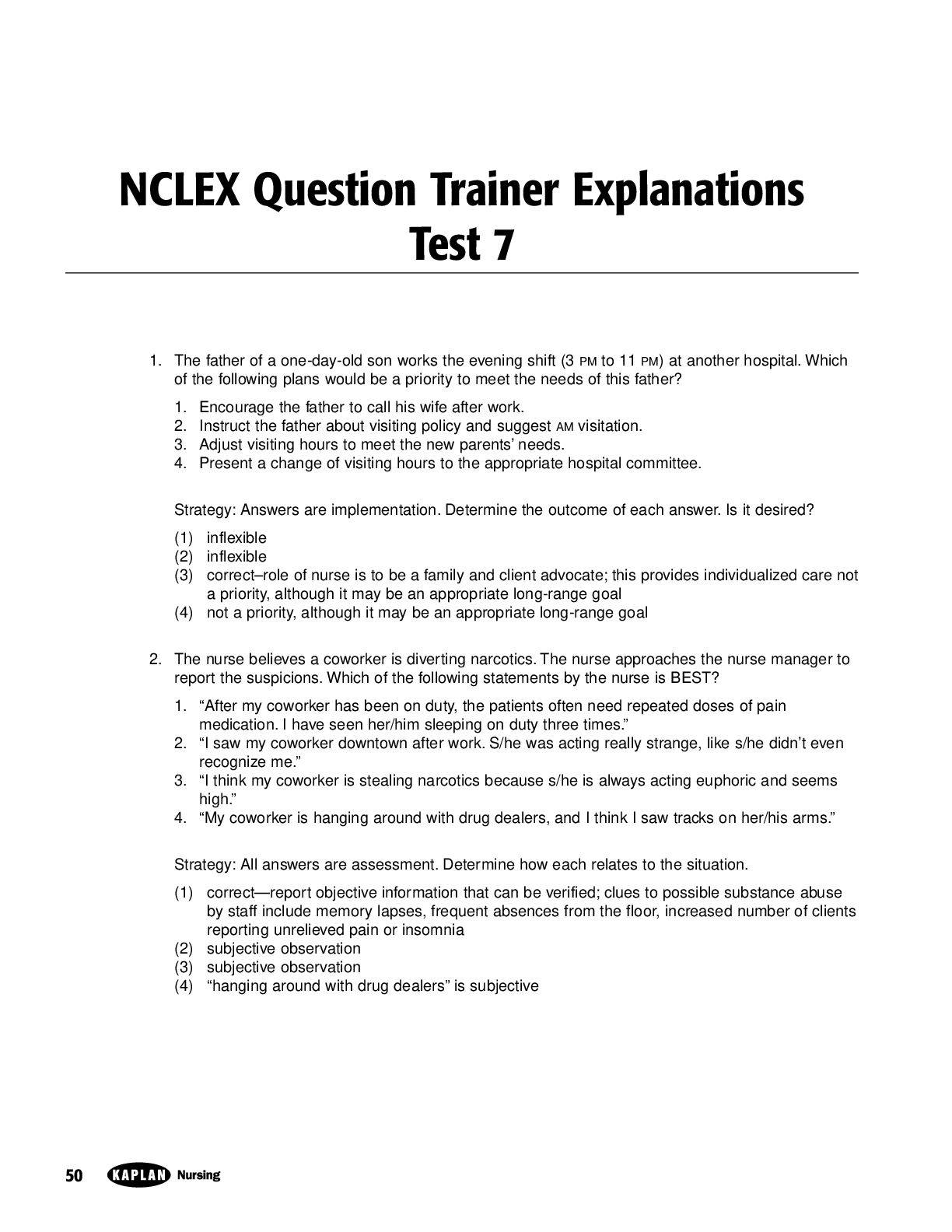
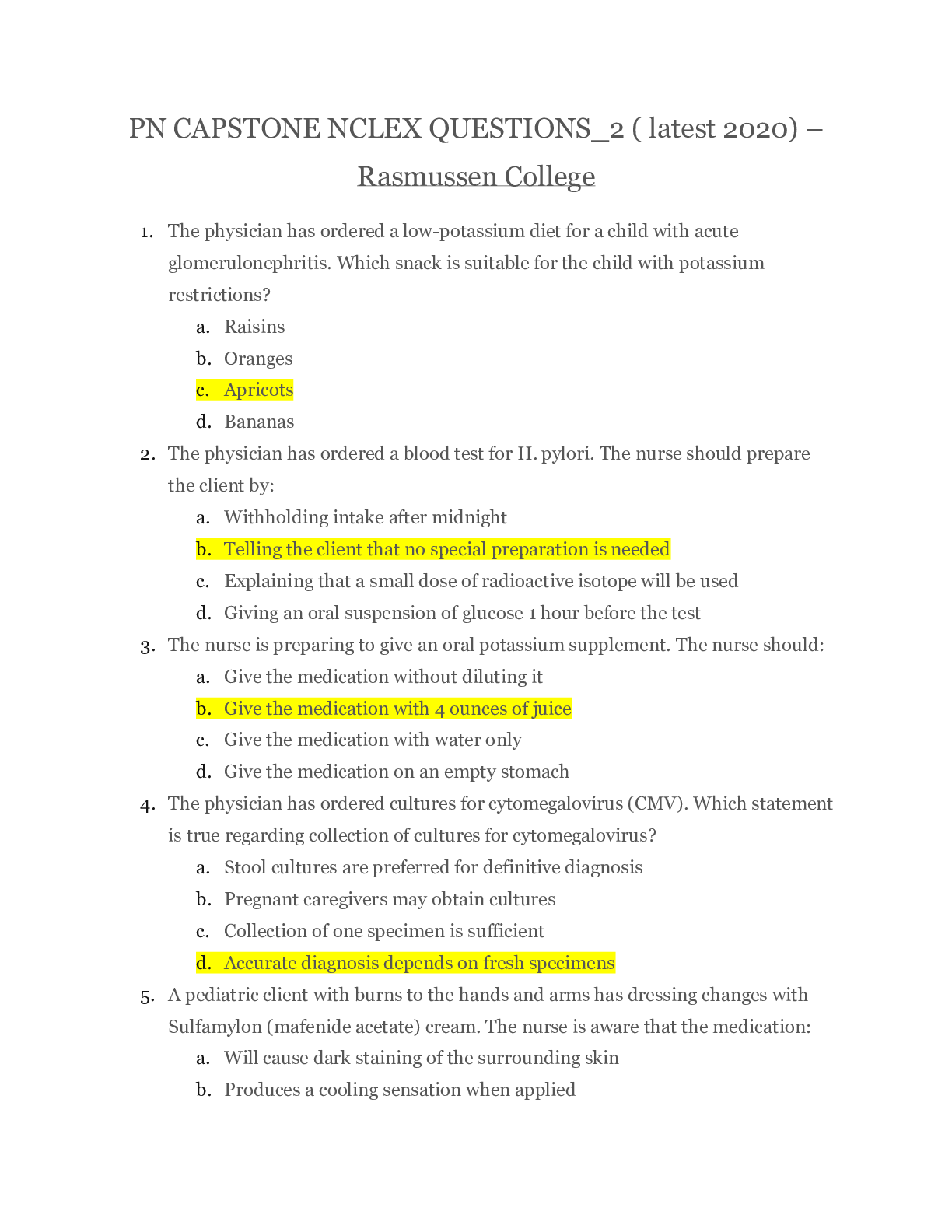

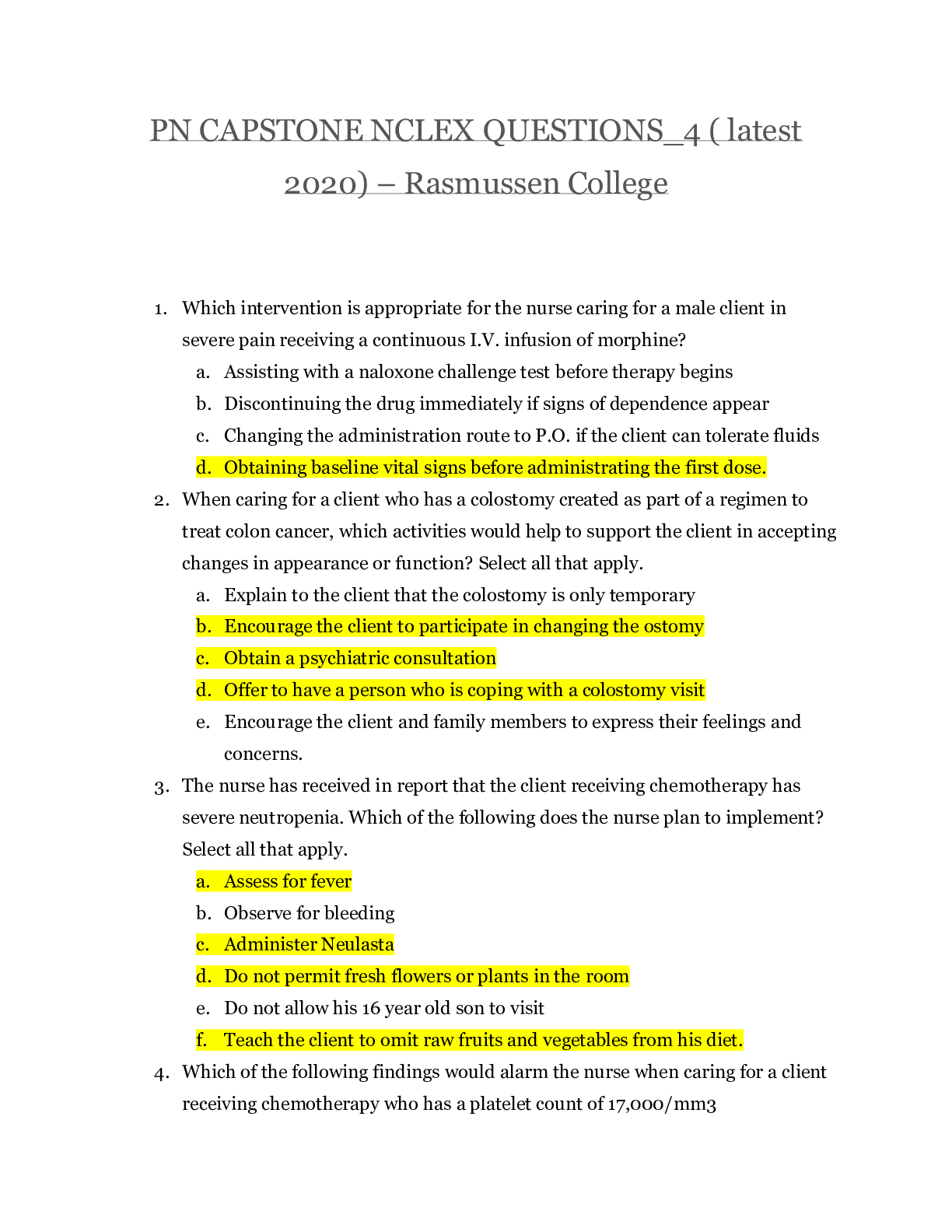



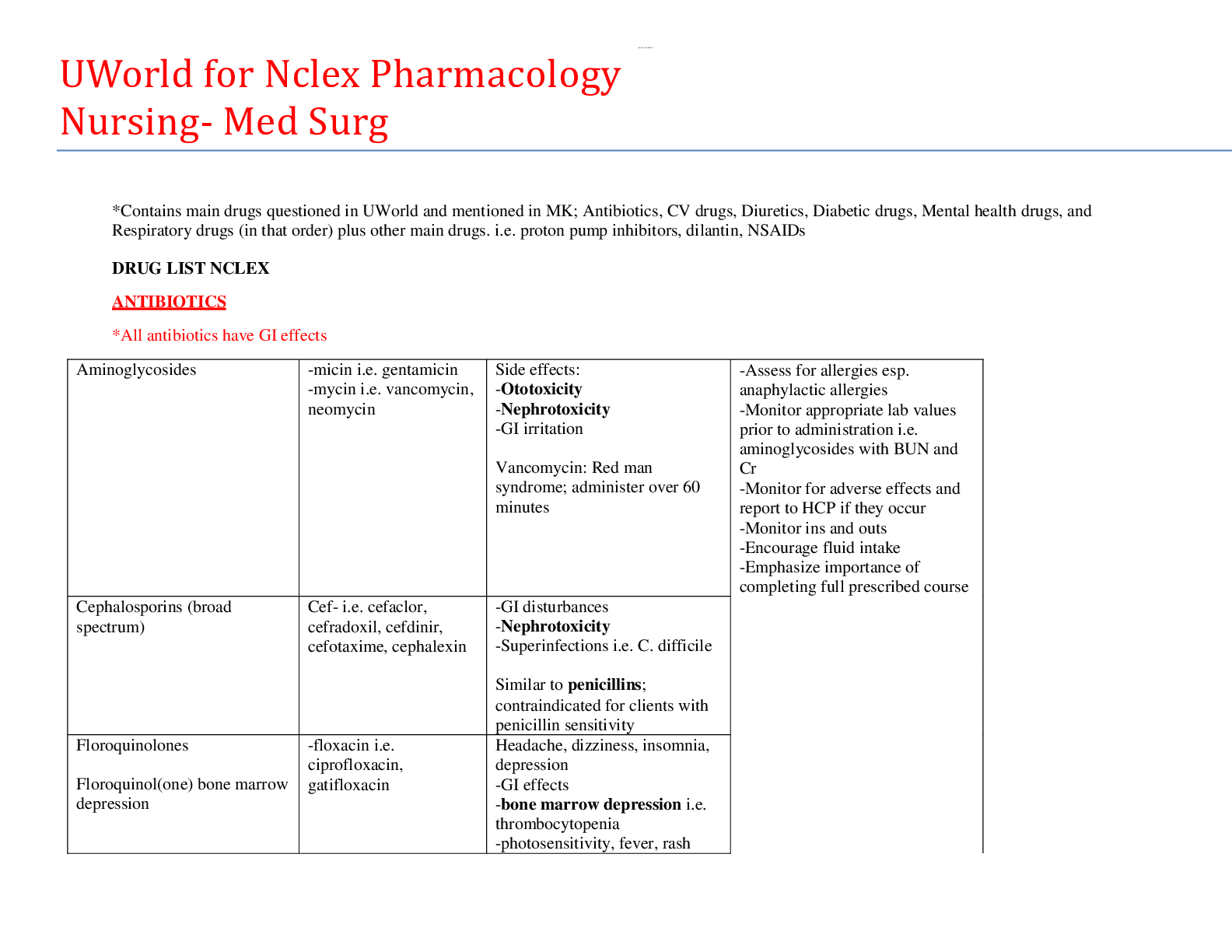

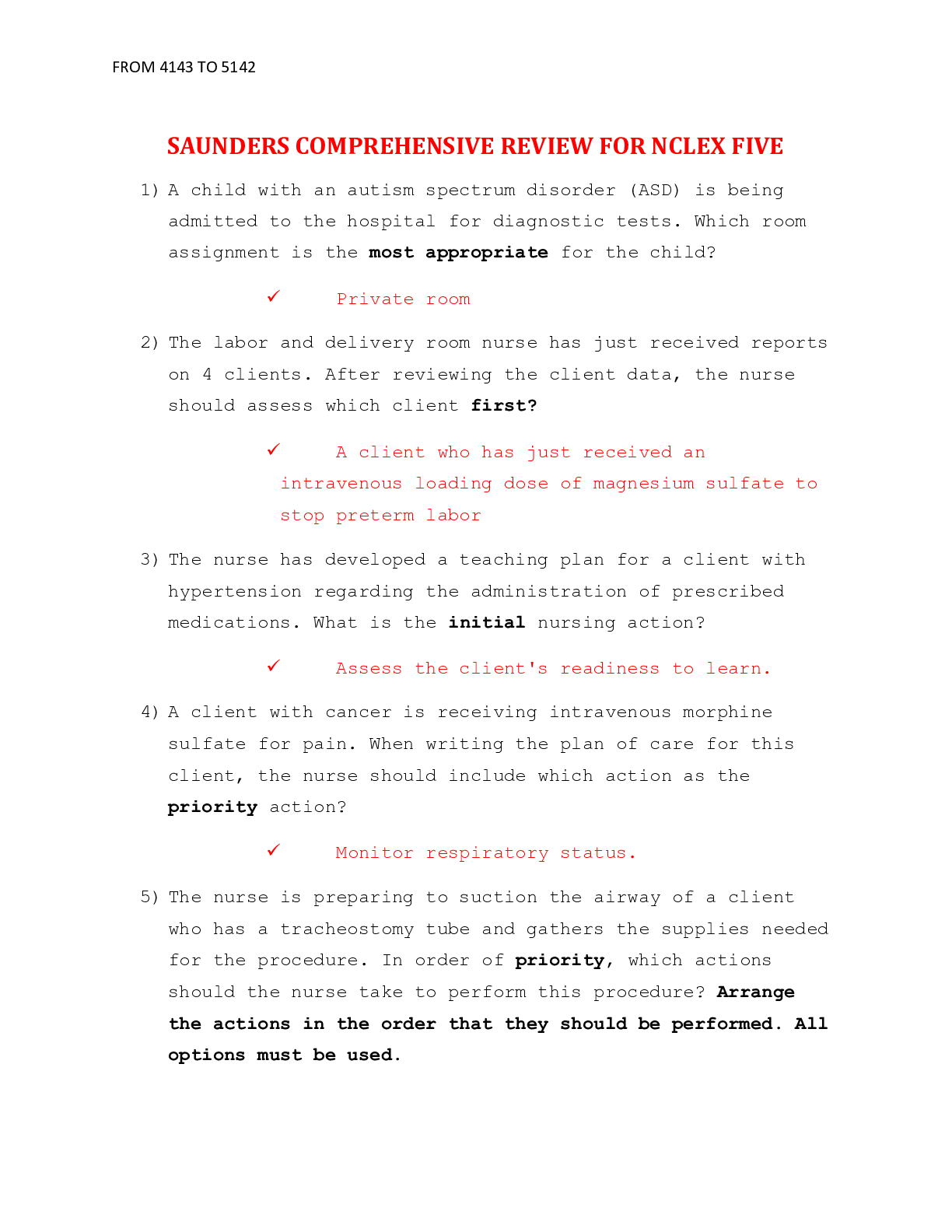
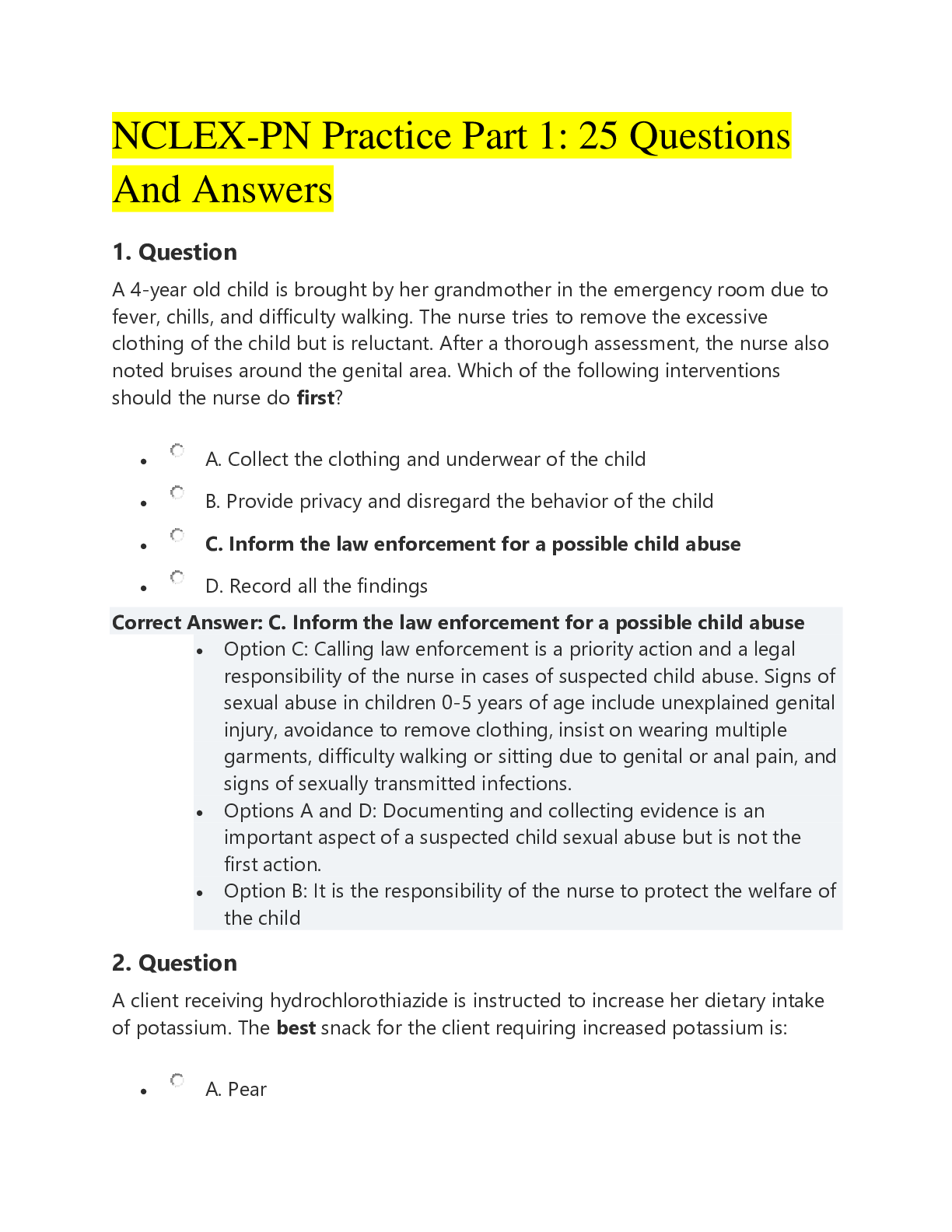
.png)
